Telestron
December 2017 ––The Day For Night Festival is one of the premier Art and Music events in the United States – where every year the pinnacle of talent showcase their latest creations for 20,000 eager Houstonians who descend into an abandoned Mail sorting facility to have their minds blown. VT Pro Design, having successfully debuted their epic creation Bardo in 2016, predictably were asked to return in 2017 to exhilarate audiences once again. This time around, VT Pro’s creative director Michael Fullman reached out to his favorite Mr. Munkowitz to collaborate on an entirely new concept – a spectacle of immersive theater at a scale that would inspire and propel beyond anything they’ve done before.
At its foundation, the installation was an exploration of the absence and presence of light and how it defines a space. The team wanted to play with dramatic scale, and to do so they employed two Kuka 210’s as Robotic Conductors, wielding large, fabricated geometric shades to manipulate the various light sources and cast brilliant arrays of graphic shadow work throughout the space.
Conceptually, they wanted to recreate one of the ancient world’s most sought-after immersive experiences, invoking a ritual that harnessed the spiritual forces of nature to create a transformative experience. This ritual was housed in a darkened chamber called the Telestron (an adaptation of the original Telesterion), deployed cutting-edge robotic and light projection technology to bring the audience into an experience of the diurnal cycle: sunrise, noon, sunset, and midnight.
In other words – a complete Day for Night.
At its foundation, the installation was an exploration of the absence and presence of light and how it defines a space. The team wanted to play with dramatic scale, and to do so they employed two Kuka 210’s as Robotic Conductors, wielding large, fabricated geometric shades to manipulate the various light sources and cast brilliant arrays of graphic shadow work throughout the space.
Conceptually, they wanted to recreate one of the ancient world’s most sought-after immersive experiences, invoking a ritual that harnessed the spiritual forces of nature to create a transformative experience. This ritual was housed in a darkened chamber called the Telestron (an adaptation of the original Telesterion), deployed cutting-edge robotic and light projection technology to bring the audience into an experience of the diurnal cycle: sunrise, noon, sunset, and midnight.
In other words – a complete Day for Night.
The Film
–– 01The Concept
–– 02The goal was to create a theatrical piece that felt immersive and all-encompassing – a total takeover of the senses. The team knew the massive scale of the robots paired with the sophistication of the Day for Night crowd and an epic Sound System could render a sensory explosion for the audience.
The core concept of Telestron, developed and written by Stephen Marshall, was that it was recreating one of the ancient world’s most sought-after immersive experiences – essentially all the attendees were taking part in a sacred ritual. This ritual was housed in a darkened chamber that was, in the ancient Greek festival at Eleusis, was called the Telesterion, which they adapted to Telestron. This ritual intended to “harness the spiritual forces of nature to create a transformative experience.”
The team then got specific about what forces of nature they wanted to portray – and chose the Diurnal Cycle as the informing palette. They loved the poetic symmetry of the cycle being a Day for Night progression, and also how it influences the seasons and the positioning of the sun, which was assigned as the primary light source. They then designed each season of the cycle, which focuses on the time of year, the position of the sun, and how that affects the symbolism and character of the light. All of which were controlled by the ‘lantern bearers’ which were the robotic conductors, and were imbued specific personalities and behaviors to accurately represent the character of the light.
Once they went through the four seasons as their own acts, they then made a chaotic and emotionally charged fifth act to render an artistic interpretation of the current state of the natural cycle – one with the warming planet has become much more turbulent and chaotic; and as a result felt an obligation to communicate that visually and sonically.
It was all quite abstract, but gave the team so much structure to work with – sometimes with these massive and complex projects there’s a major need for a conceptual framework to work within. Establishing the concept early and sticking with it really helped guide the process and kept the team focused on the high-level vision of the installation throughout the production cycle.
The core concept of Telestron, developed and written by Stephen Marshall, was that it was recreating one of the ancient world’s most sought-after immersive experiences – essentially all the attendees were taking part in a sacred ritual. This ritual was housed in a darkened chamber that was, in the ancient Greek festival at Eleusis, was called the Telesterion, which they adapted to Telestron. This ritual intended to “harness the spiritual forces of nature to create a transformative experience.”
The team then got specific about what forces of nature they wanted to portray – and chose the Diurnal Cycle as the informing palette. They loved the poetic symmetry of the cycle being a Day for Night progression, and also how it influences the seasons and the positioning of the sun, which was assigned as the primary light source. They then designed each season of the cycle, which focuses on the time of year, the position of the sun, and how that affects the symbolism and character of the light. All of which were controlled by the ‘lantern bearers’ which were the robotic conductors, and were imbued specific personalities and behaviors to accurately represent the character of the light.
Once they went through the four seasons as their own acts, they then made a chaotic and emotionally charged fifth act to render an artistic interpretation of the current state of the natural cycle – one with the warming planet has become much more turbulent and chaotic; and as a result felt an obligation to communicate that visually and sonically.
It was all quite abstract, but gave the team so much structure to work with – sometimes with these massive and complex projects there’s a major need for a conceptual framework to work within. Establishing the concept early and sticking with it really helped guide the process and kept the team focused on the high-level vision of the installation throughout the production cycle.
–– 02

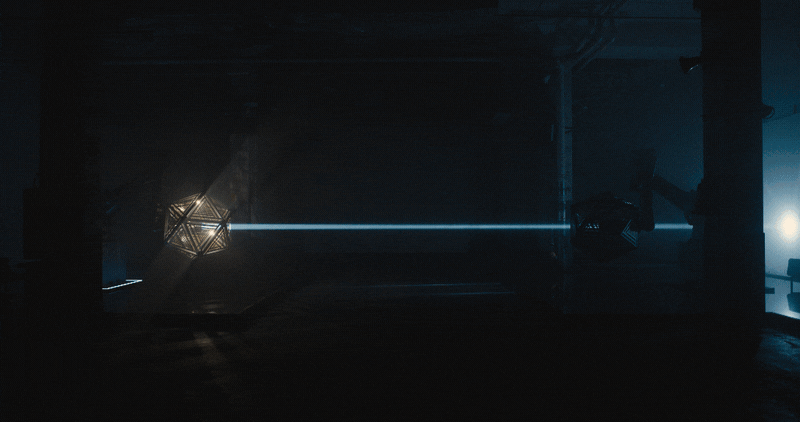





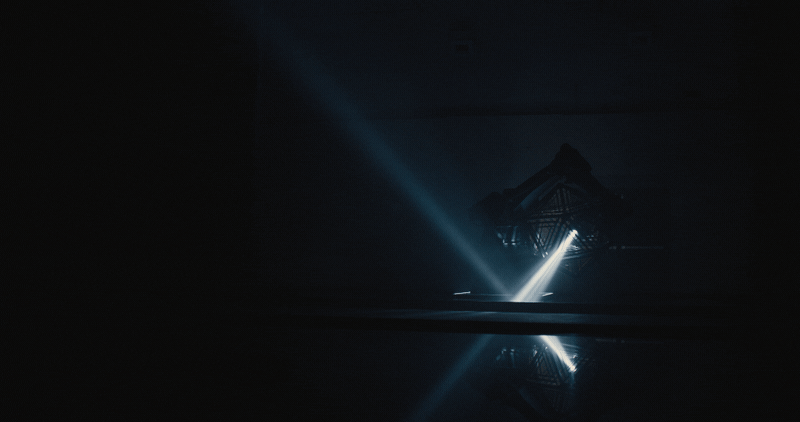
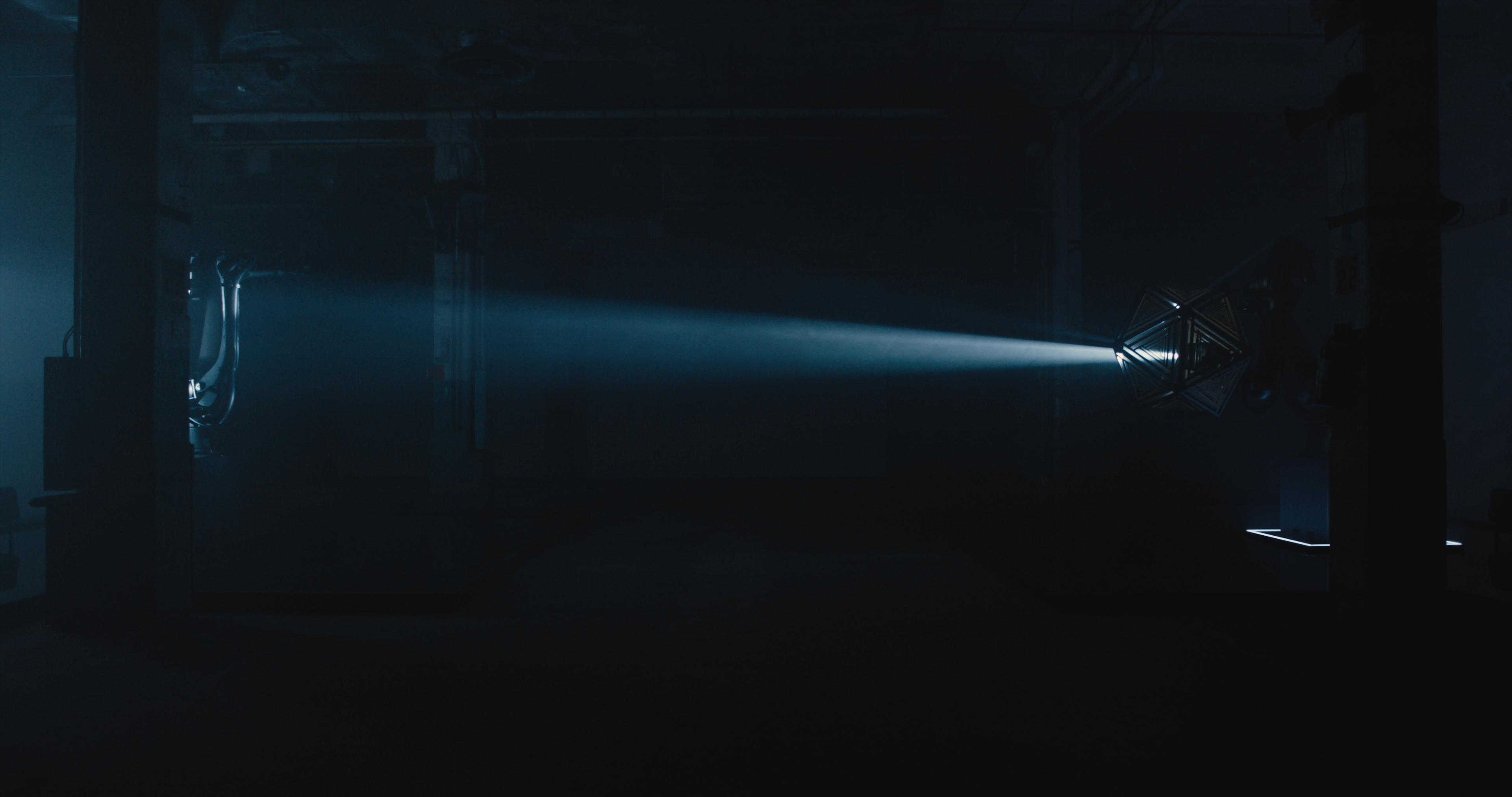



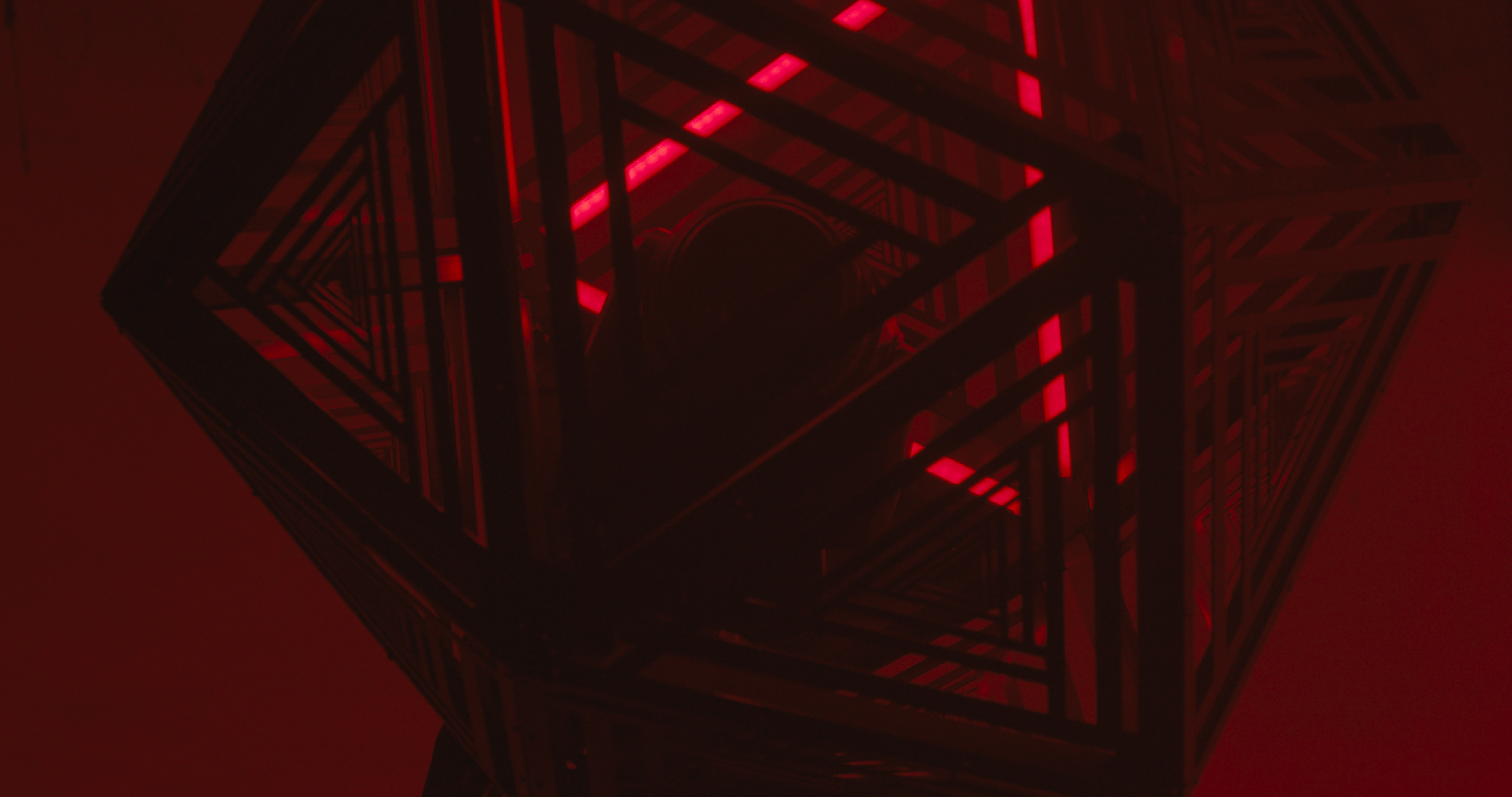
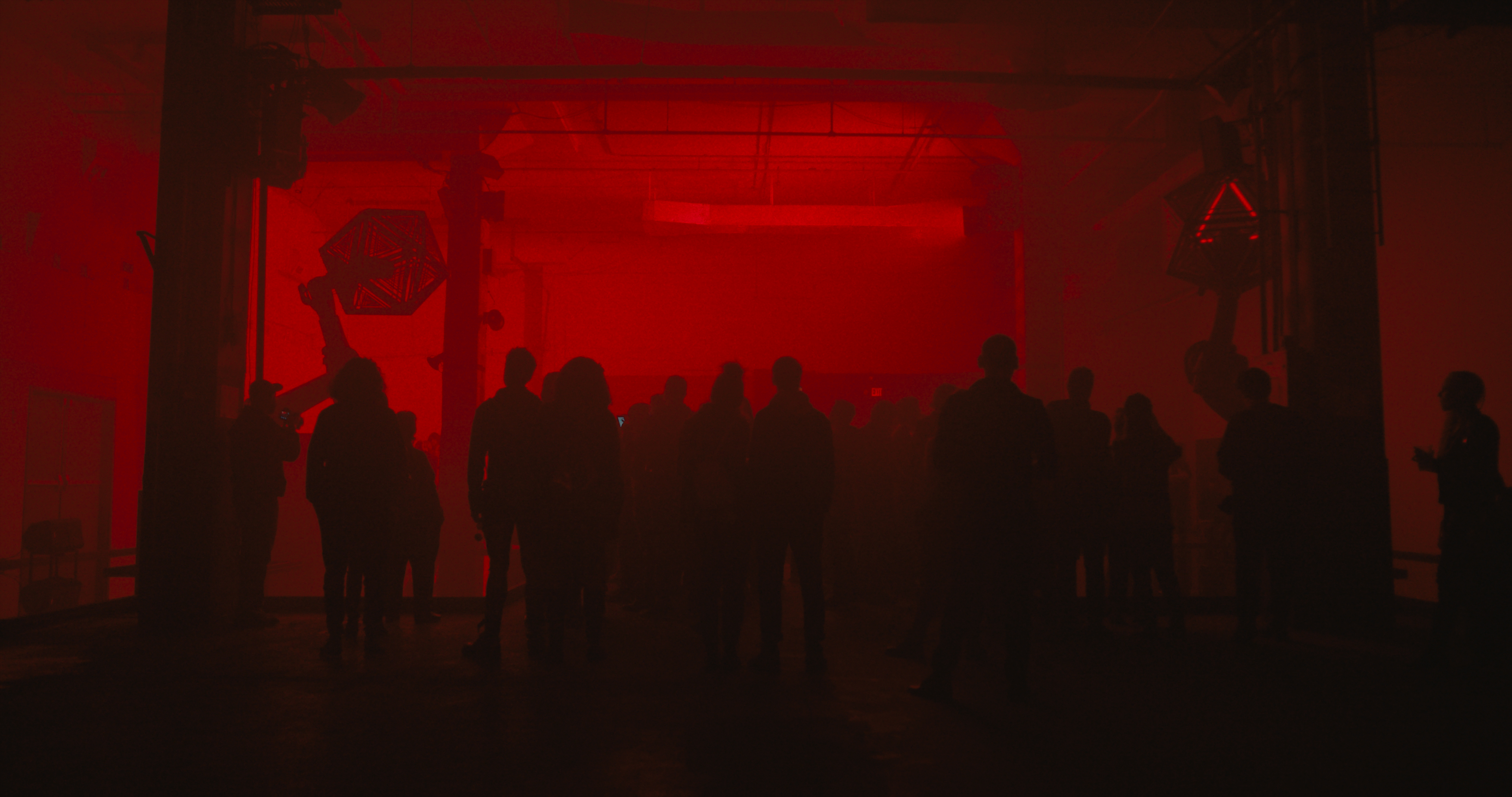





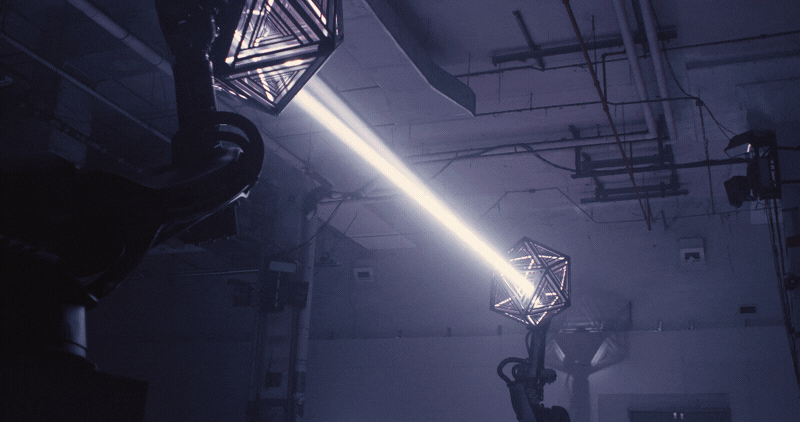
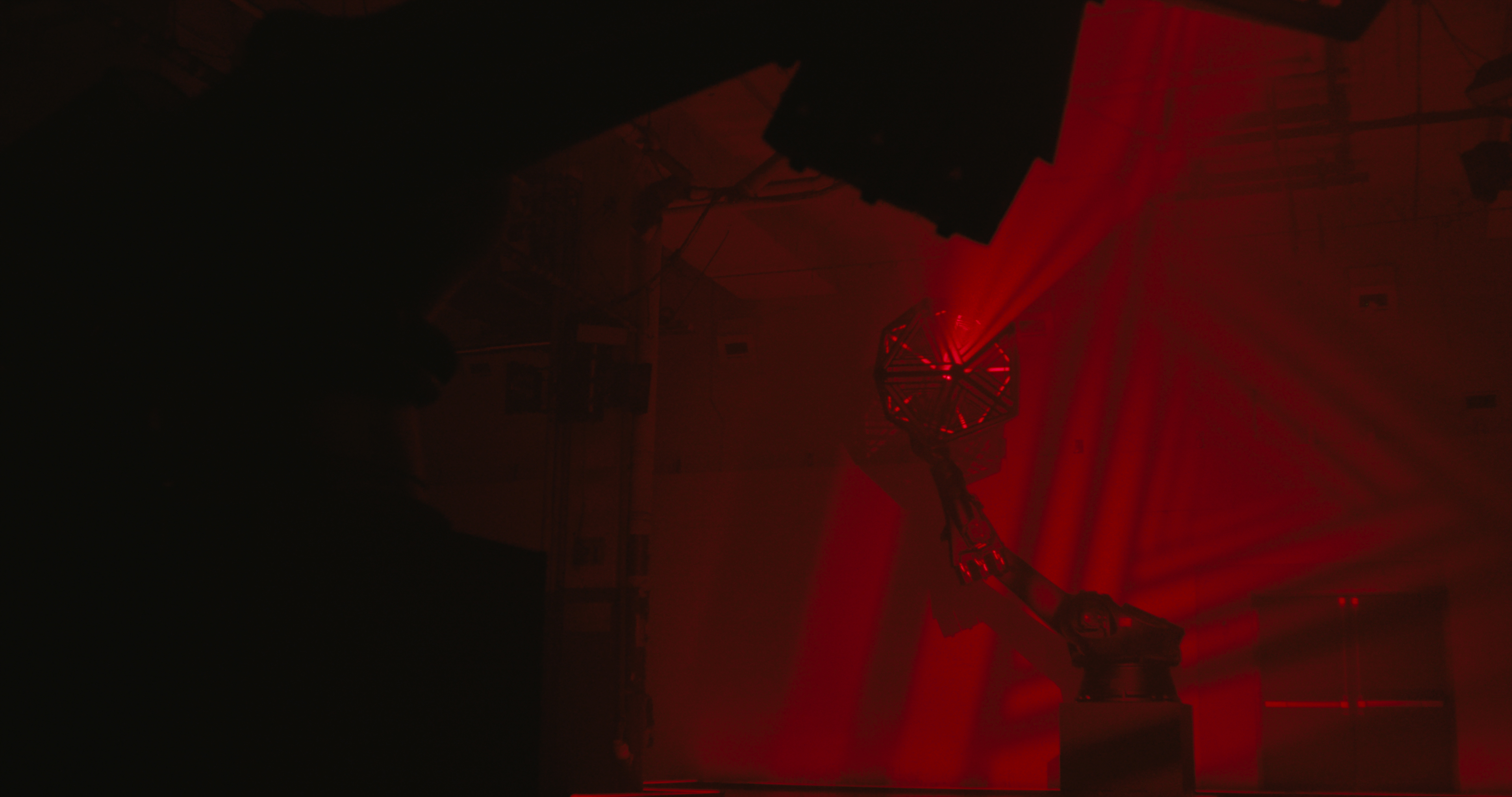




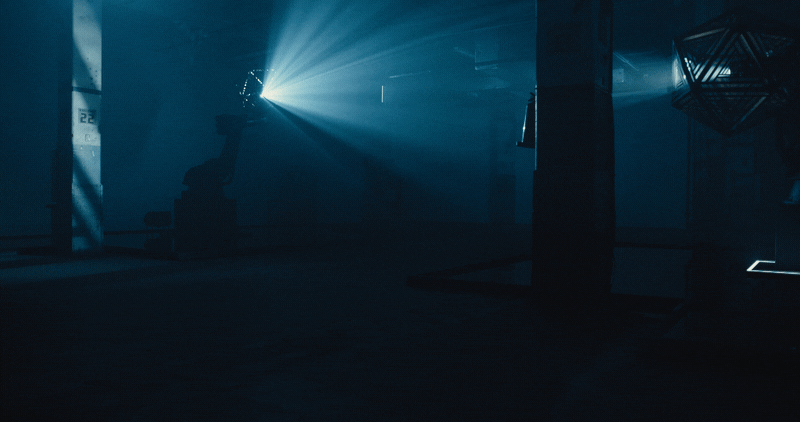





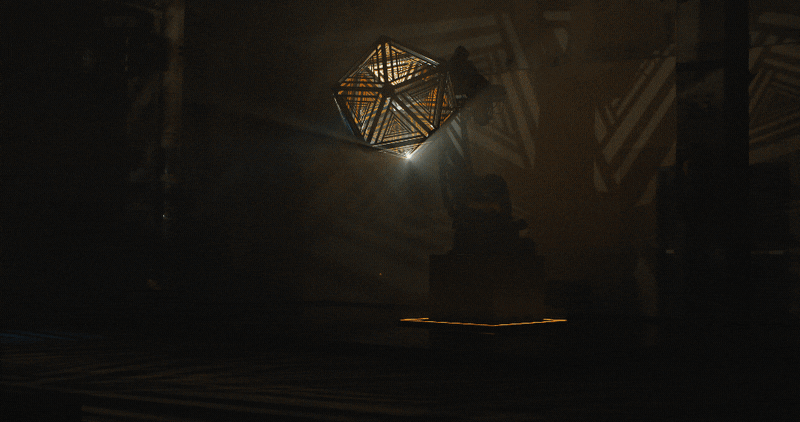


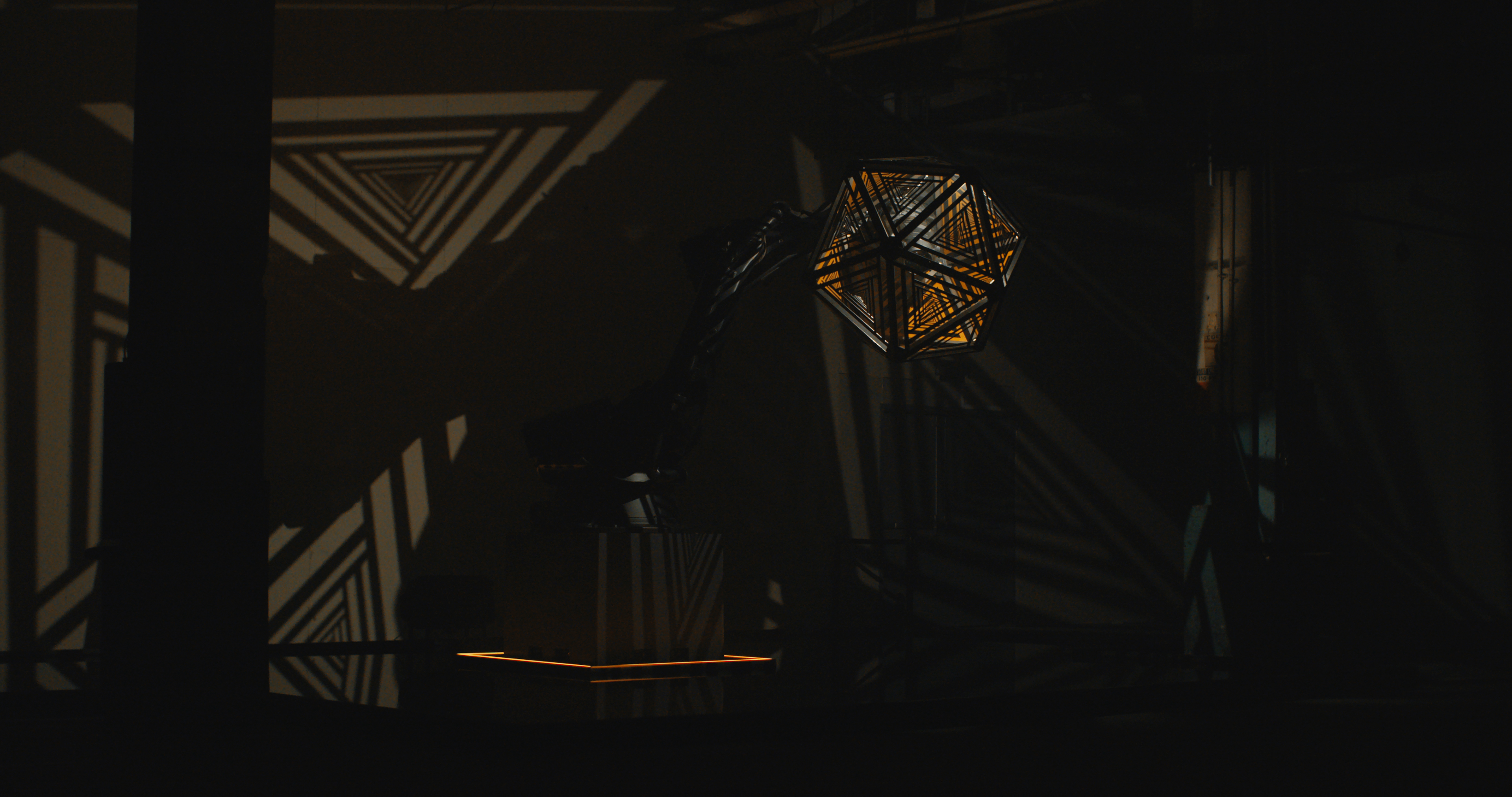

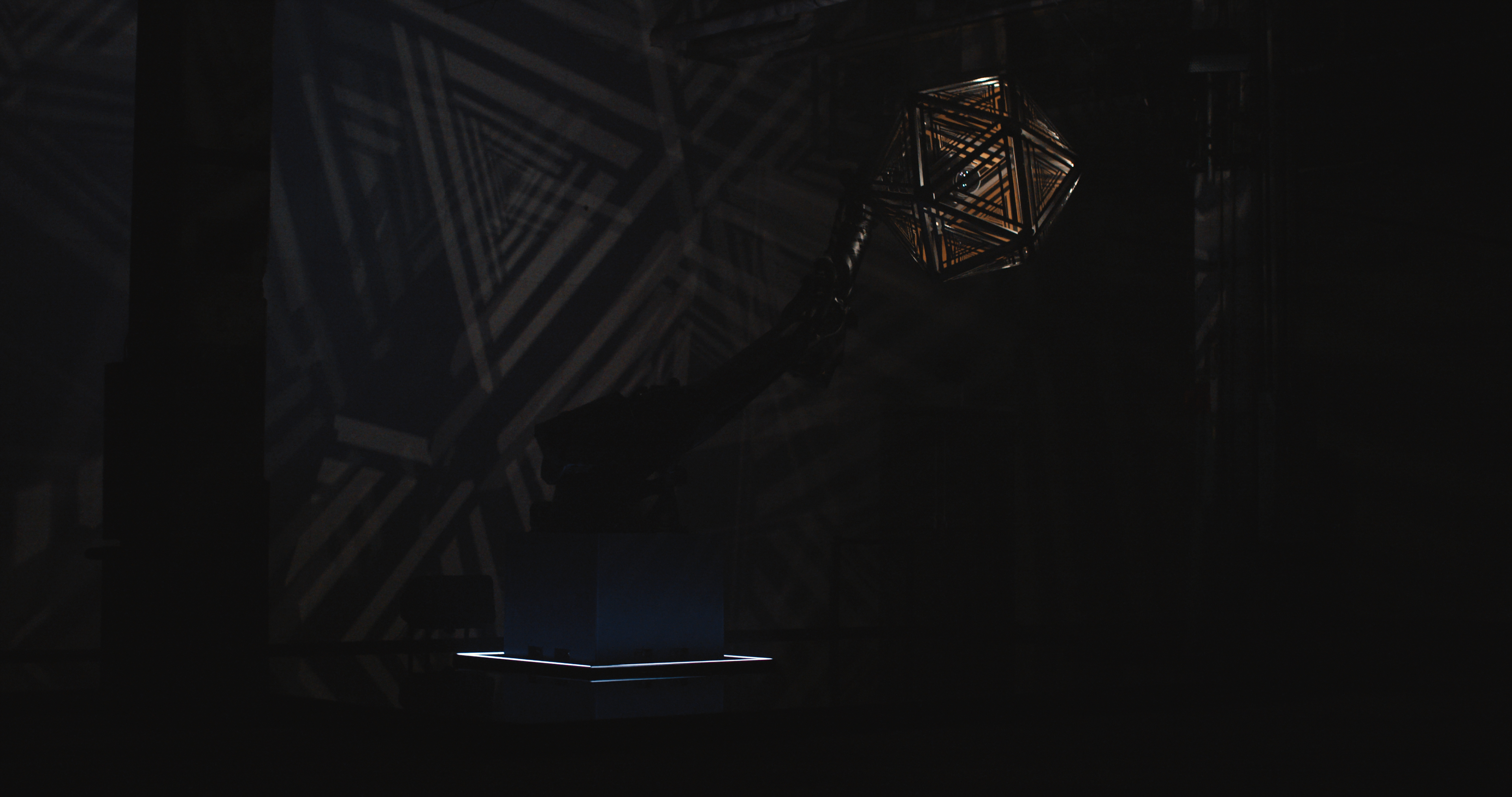



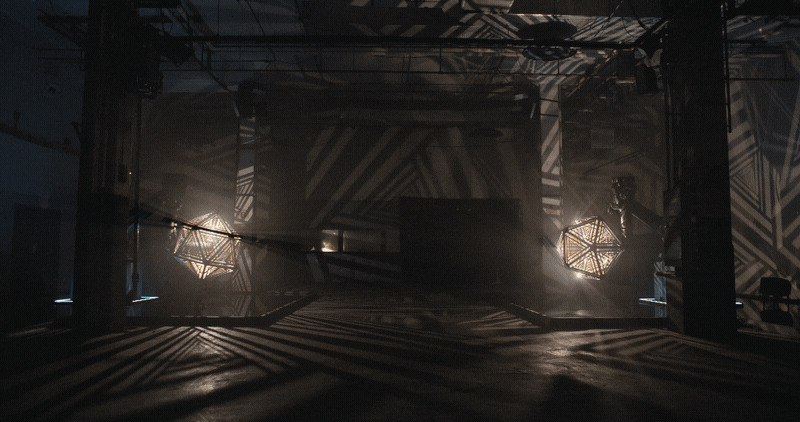




The Robotics
–– 03One thing that is so special about working with robots is finding ways to break them out of their norm. They are giant, complicated physical specimens that were meant to repeatedly accomplish similar tasks over and over again with precision. In the teams programming and working with them, they wanted to imbue personality and a character-driven presence. So in process they started every act with a hero pose in the beginning, and a hero pose in the end. That way they had these powerful, monolithic key moments that the robots would be journeying towards – but in the process could focus on how they got to these poses and explore the journey towards them.
They approached every act not only thinking about how the robot was moving but also why it was moving, at points they wanted to make them seem quick, weightless and free, but at other points they wanted them to seem labored and exhausted with their weight and task. The team was very inspired by some key characteristics that were given to the robots in every act, that supported the concept and the various seasons of the performance.
Another way they were challenged was by how they manipulated the light. In each act they would be looking at the personality of each robot, and how it would communicate the light with that personality in mind. In Act IV for example, one robot was searching for the other in a night scene, and using its light to illuminate what it is trying to find. This opened up such a weird, abstract way of thinking about these robotic conductors as much more than machines and helped to break the boundaries of the mechanical motion norms we’ve become accustomed to seeing.
They approached every act not only thinking about how the robot was moving but also why it was moving, at points they wanted to make them seem quick, weightless and free, but at other points they wanted them to seem labored and exhausted with their weight and task. The team was very inspired by some key characteristics that were given to the robots in every act, that supported the concept and the various seasons of the performance.
Another way they were challenged was by how they manipulated the light. In each act they would be looking at the personality of each robot, and how it would communicate the light with that personality in mind. In Act IV for example, one robot was searching for the other in a night scene, and using its light to illuminate what it is trying to find. This opened up such a weird, abstract way of thinking about these robotic conductors as much more than machines and helped to break the boundaries of the mechanical motion norms we’ve become accustomed to seeing.

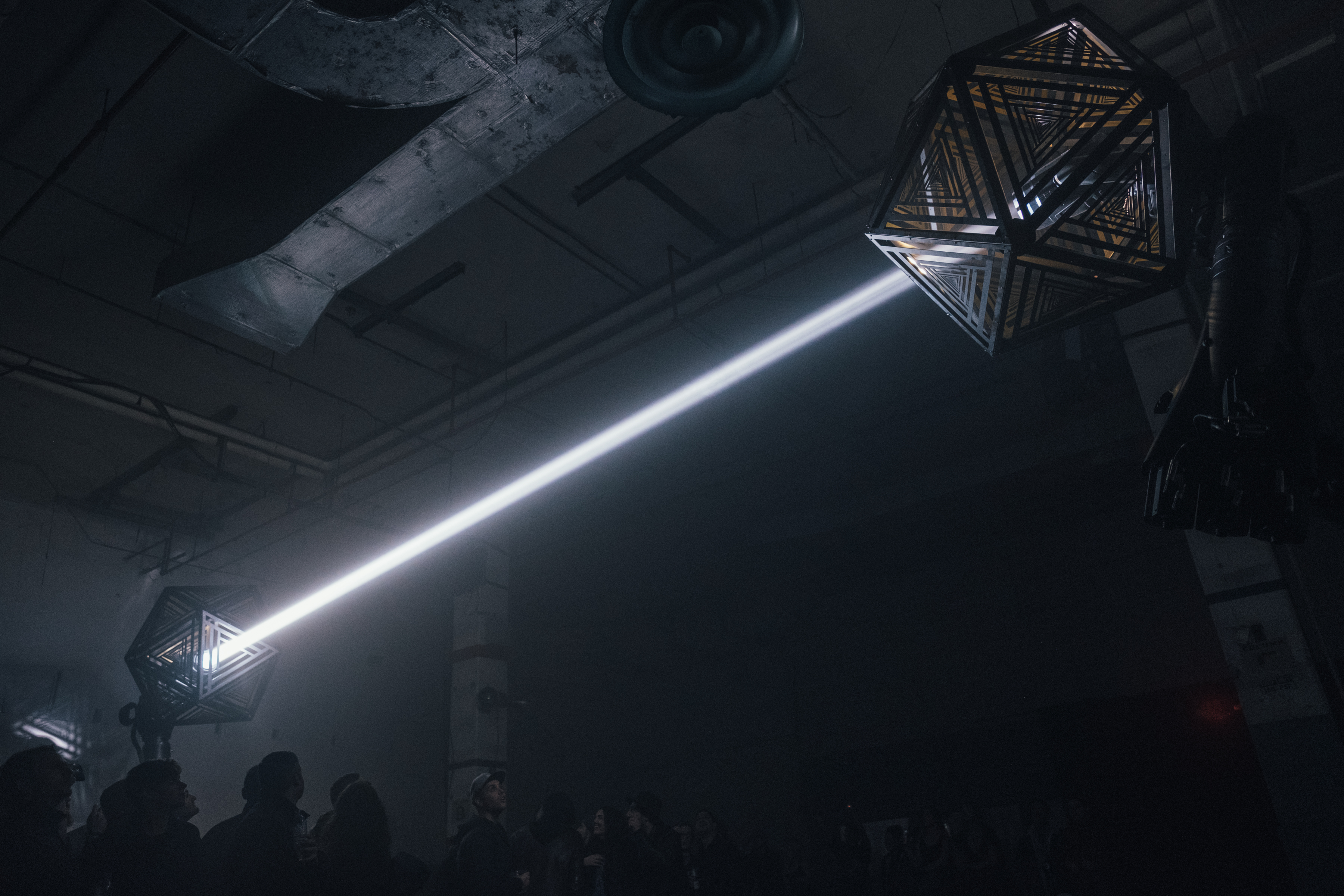

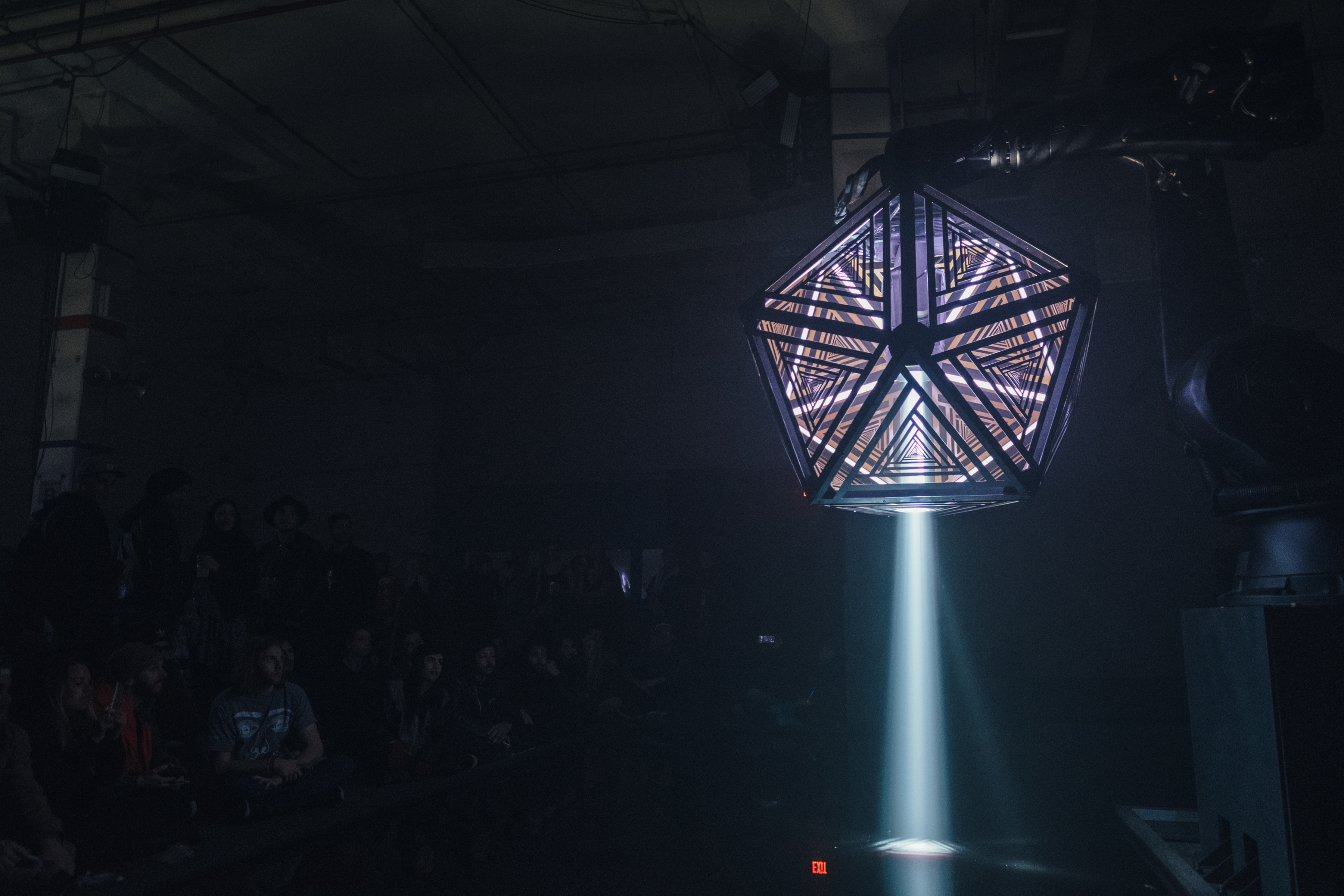
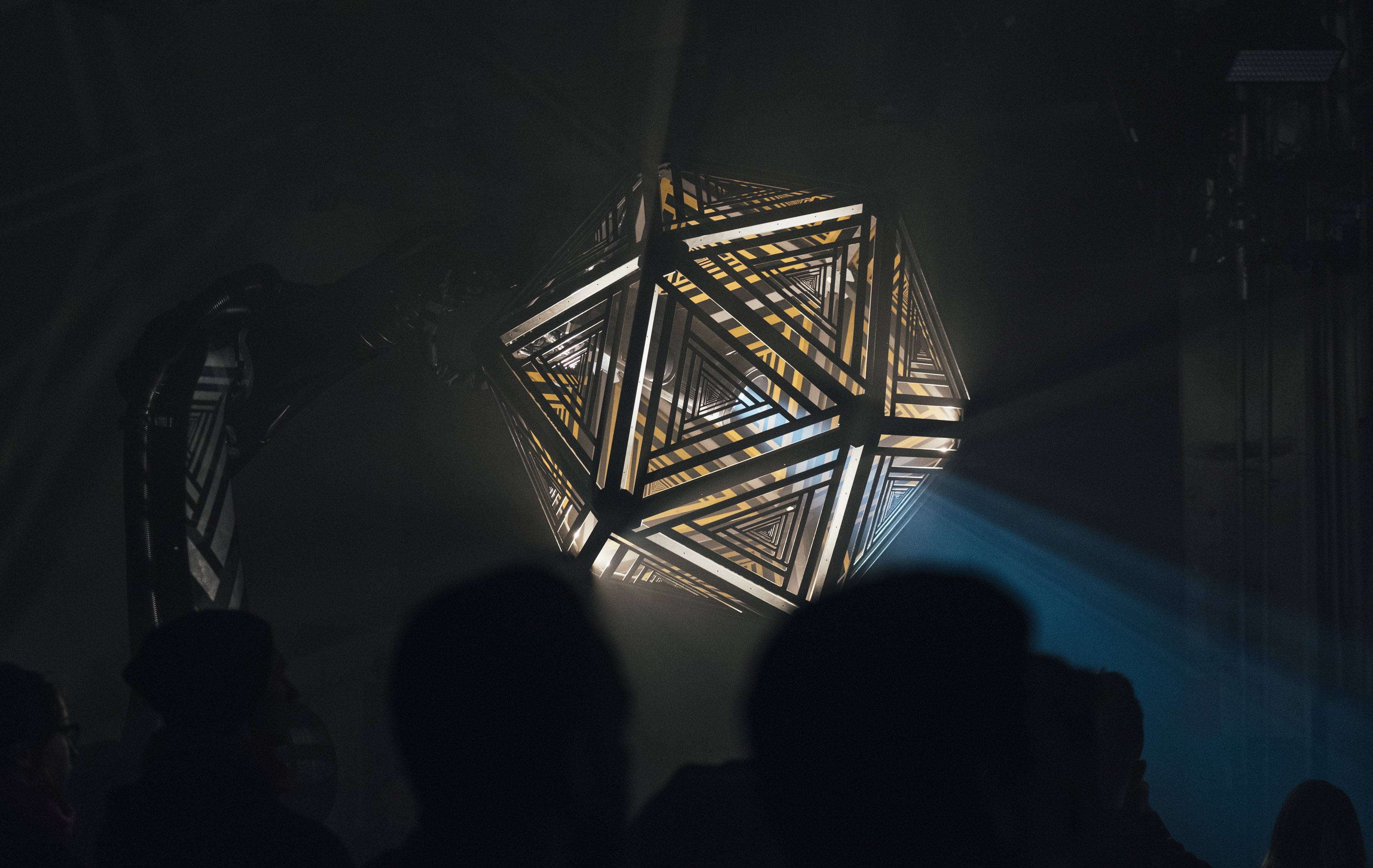
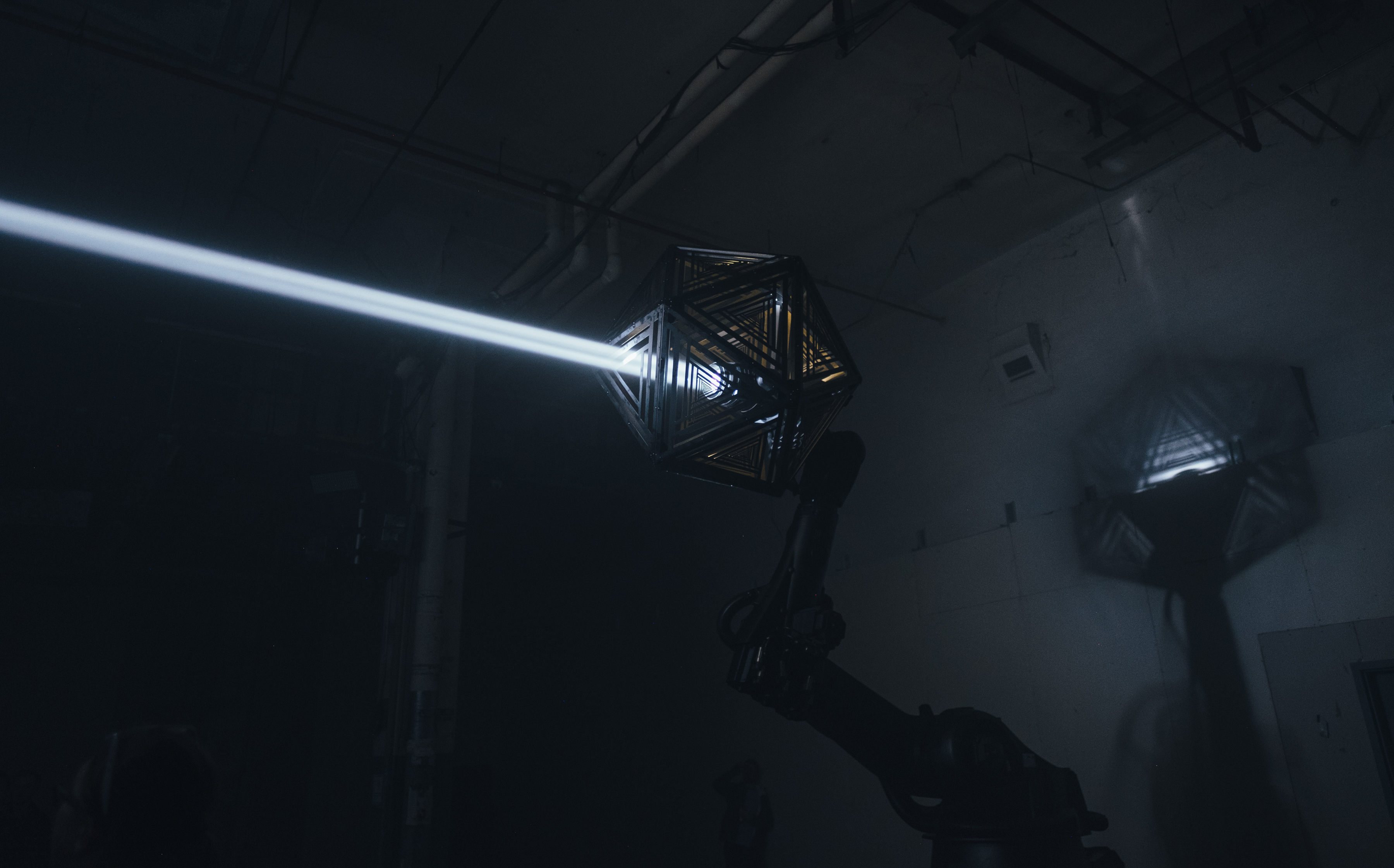

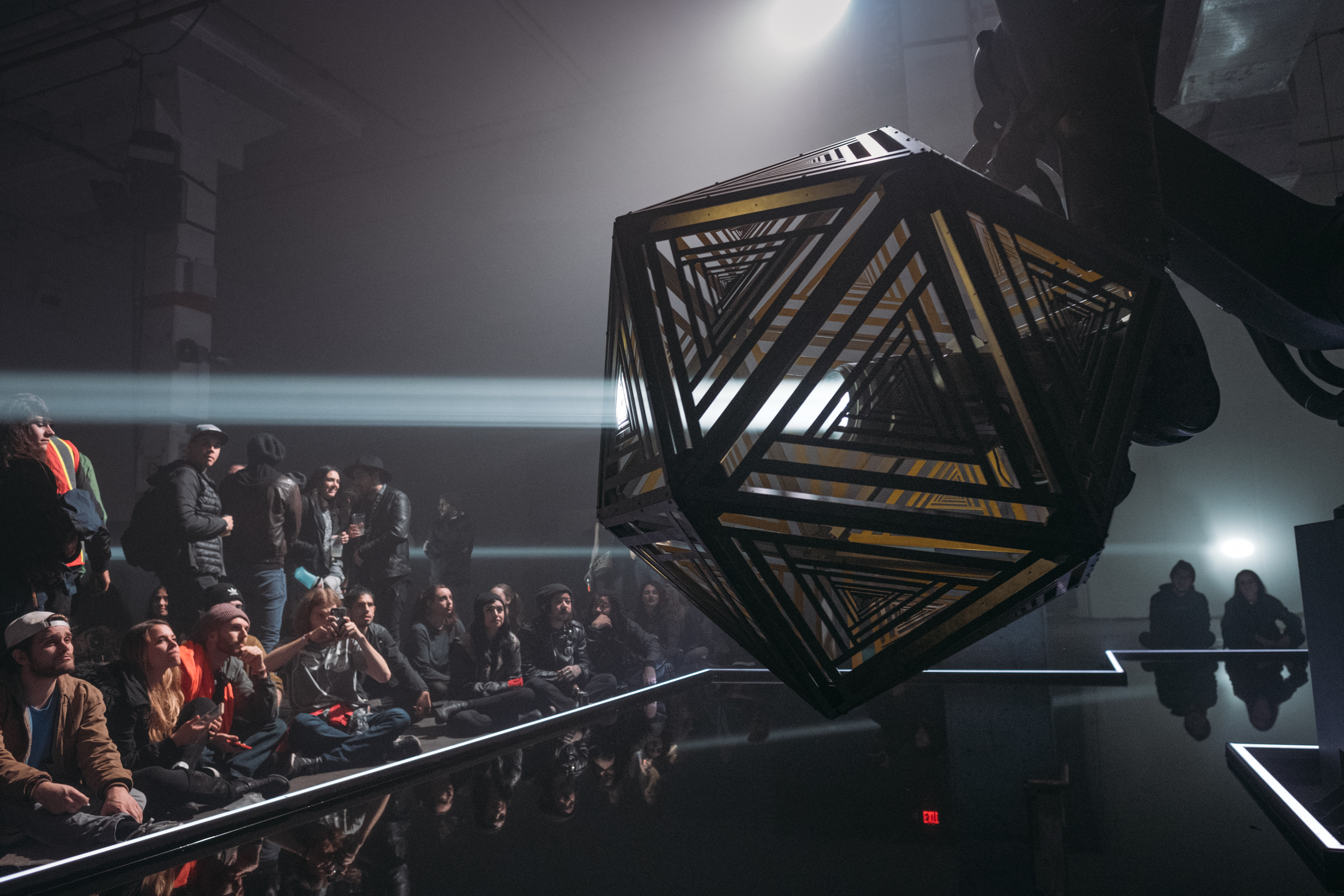

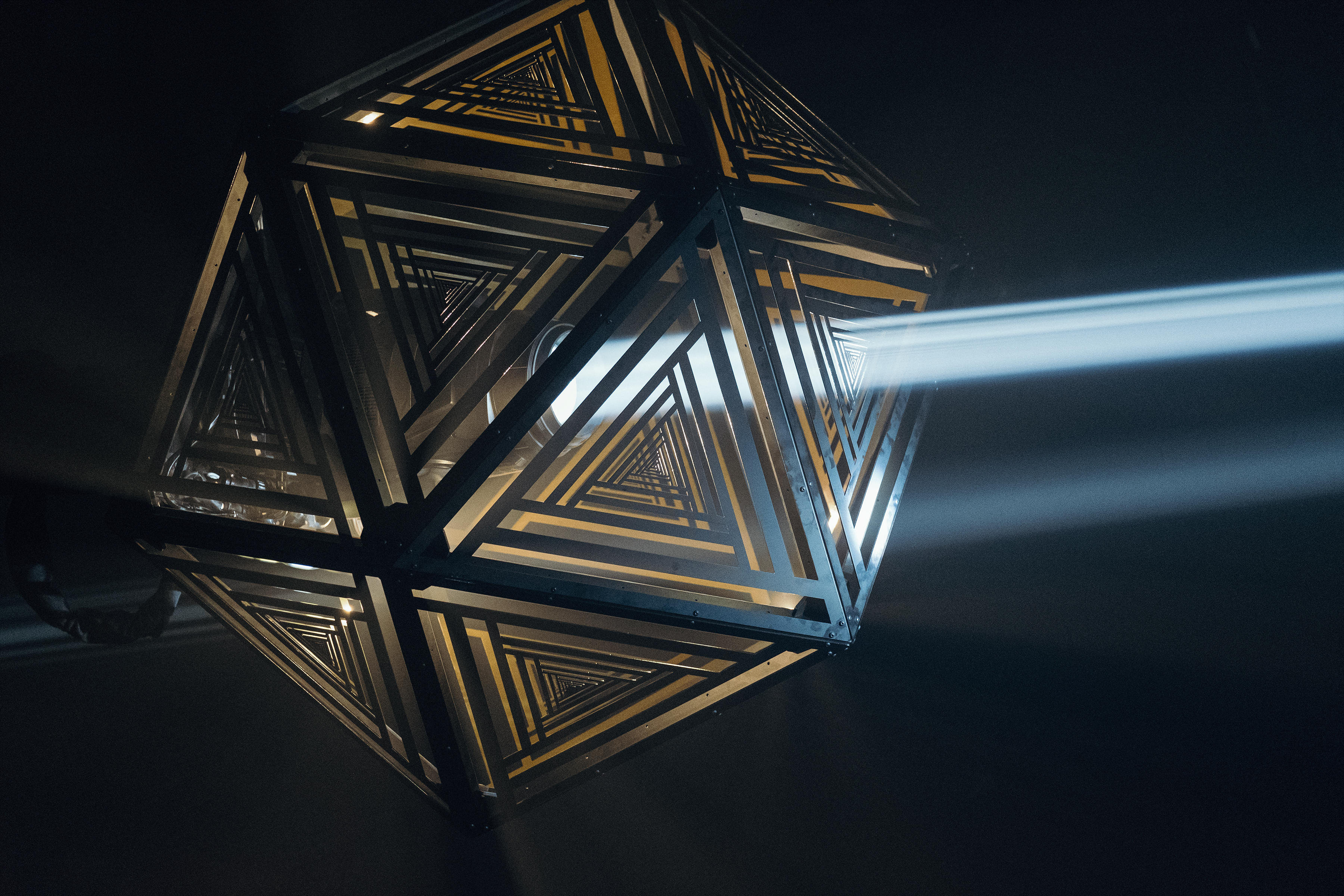
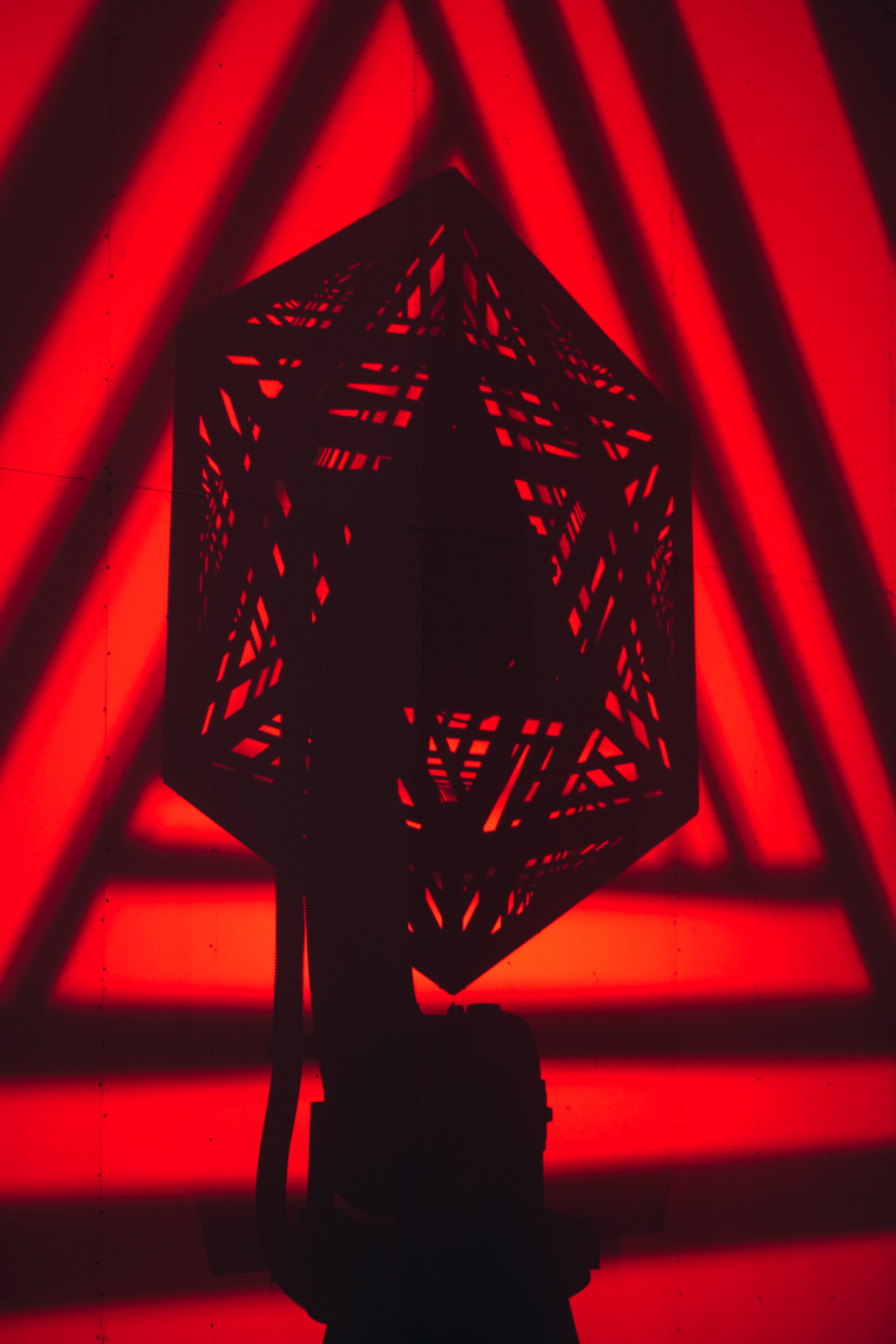
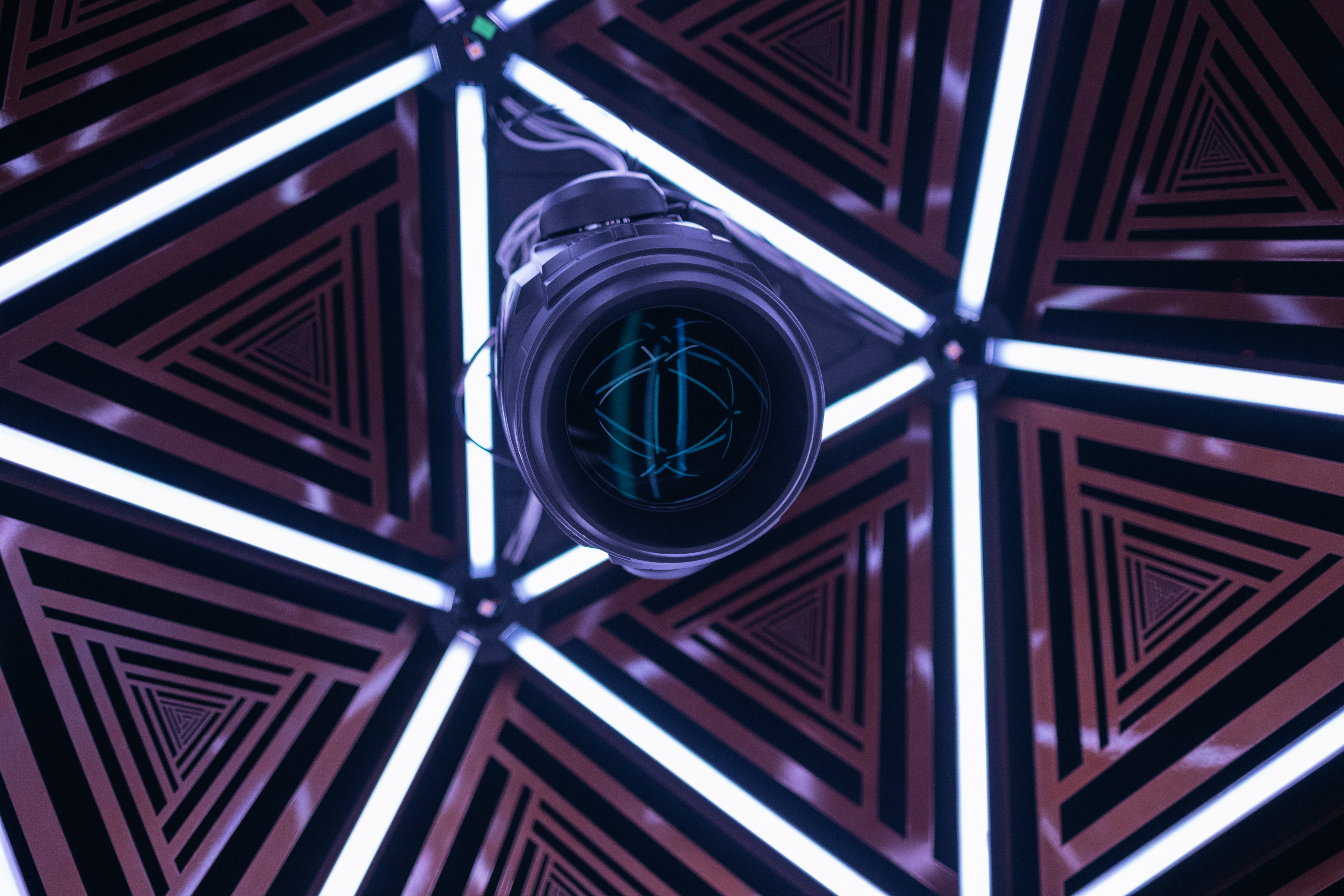
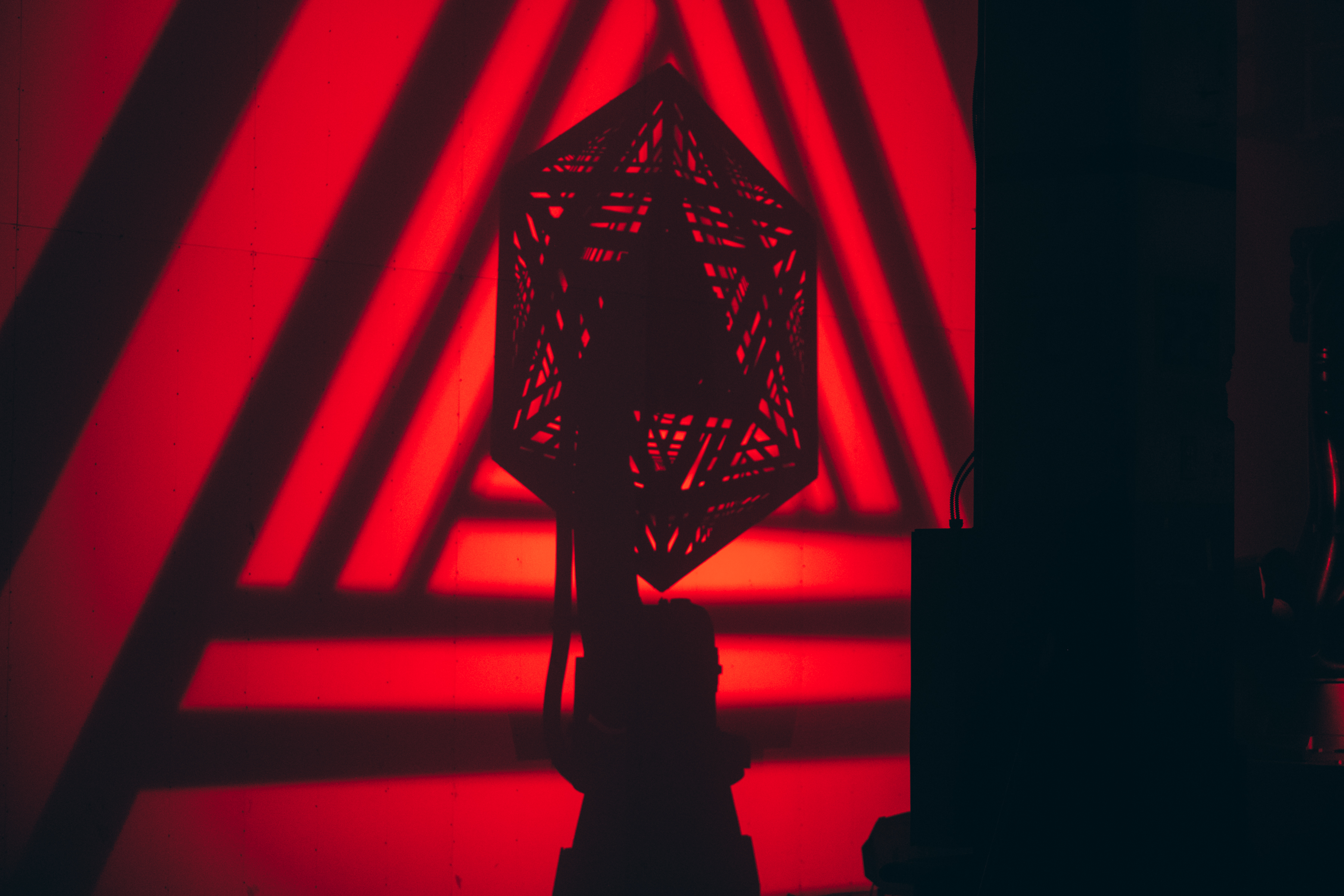

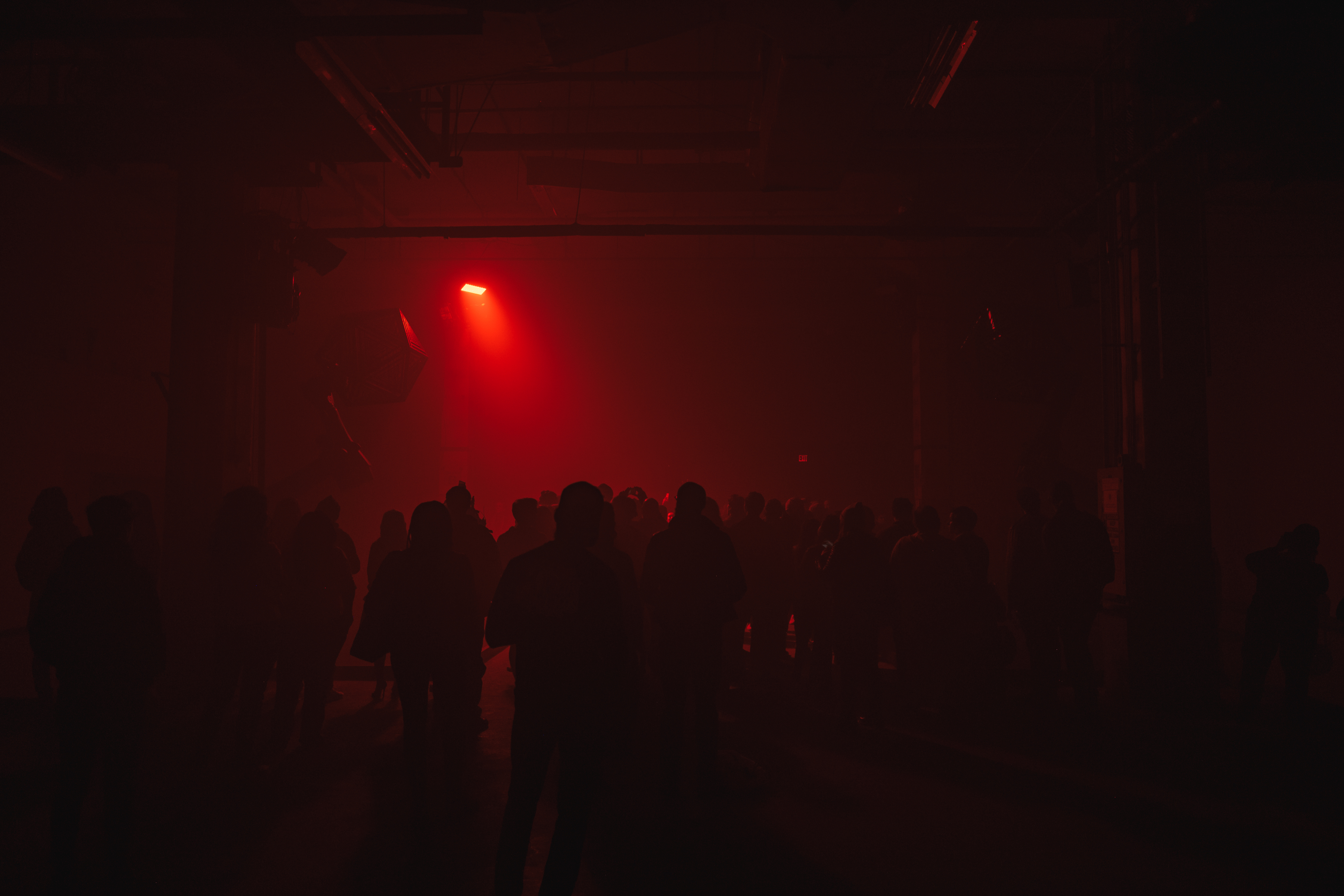
The Process
–– 04Starting from the ground up, Telestron involved a couple of different key factors. VT Pro’s Design, fabrication and physical production, electronics, show control systems, etc. The two Robots and their risers, and then the timeline programming of the show.
For all of the physical pieces, VT Pro pre-built the entire setup in LA at their studios. The reflecting pools were the more elegant solution for keeping people away from the robots and custom pool liners and frames were made to support them. The robots themselves were sitting on weighted pedestals that were then bolted directly to the concrete in the location.
Attached to the robots were our icosahedron shapes that we engineered and designed in house. They consist of a few different elements, The frames themselves were built with channels on the interior that let us sink LED Pixel tape into the complete geo. We then hid that pixel tape with frosted gray diffuser frames. In each vertex we also had a really bright LED Cob which we wired into individual dimming control. Then finally we had our moving light in the interior of the shape which allowed us a focusable and movable light source in the shape to get our natural texture through its faces.
From a control side we would animate all of the robot moves in 3D and then load those paths onto the robots controllers. From there our team built a master control system in Touch Designer that triggered the robots, controlled the LED Pixel Tape, and sent out a master timecode clock that was then being read by our lighting console as well, which we used to program the two moving lights, and the room lighting.
For all of the physical pieces, VT Pro pre-built the entire setup in LA at their studios. The reflecting pools were the more elegant solution for keeping people away from the robots and custom pool liners and frames were made to support them. The robots themselves were sitting on weighted pedestals that were then bolted directly to the concrete in the location.
Attached to the robots were our icosahedron shapes that we engineered and designed in house. They consist of a few different elements, The frames themselves were built with channels on the interior that let us sink LED Pixel tape into the complete geo. We then hid that pixel tape with frosted gray diffuser frames. In each vertex we also had a really bright LED Cob which we wired into individual dimming control. Then finally we had our moving light in the interior of the shape which allowed us a focusable and movable light source in the shape to get our natural texture through its faces.
From a control side we would animate all of the robot moves in 3D and then load those paths onto the robots controllers. From there our team built a master control system in Touch Designer that triggered the robots, controlled the LED Pixel Tape, and sent out a master timecode clock that was then being read by our lighting console as well, which we used to program the two moving lights, and the room lighting.
–– 04
The Case Study
–– 05VT Pro Design
–– 06Munko learned so much about Robotics from his years at Bot & Dolly, and witnessing first-hand the pains of creating an entire slew of software hacks and enhancements to get robots to operate with millimeter accuracy. VT Pro has since picked up where B&D left off and has established a beautiful workflow to command the robots with the same accuracy and precision as the software will allow – while making the iteration process much faster to perfect what can and can’t be done with the machines.
So it wasn’t necessarily getting them to MOVE that was the most challenging part of the process, but dealing with all the lighting equipment tethered to the robot while it was moving – in total it was about 28 cables running down the arm while it was whirling around in various ways. So dealing with cabling getting stuck on screws or even being ripped off entirely was a major obstacle, because unfortunately the robotic arm is completely unaware of where the cabling is. So if something gets stuck, the arm is going to continue doing what it’s trained to do and there goes another 3 hours of down time to fix the damn cable that just ripped off the arm!
But this is always the case with the work Munko and VT Pro do – they get thrashed by something, learn from it and perfect it, and then just move onward to the next thrashing. They’re not really sure if they will ever just do something that they know will work perfectly – as somehow they always feel compelled to push outside their comfort zone trying something completely unknown or impossible. If they don’t, then boredom will set in quickly – and that’s both a blessing and a curse.
So it wasn’t necessarily getting them to MOVE that was the most challenging part of the process, but dealing with all the lighting equipment tethered to the robot while it was moving – in total it was about 28 cables running down the arm while it was whirling around in various ways. So dealing with cabling getting stuck on screws or even being ripped off entirely was a major obstacle, because unfortunately the robotic arm is completely unaware of where the cabling is. So if something gets stuck, the arm is going to continue doing what it’s trained to do and there goes another 3 hours of down time to fix the damn cable that just ripped off the arm!
But this is always the case with the work Munko and VT Pro do – they get thrashed by something, learn from it and perfect it, and then just move onward to the next thrashing. They’re not really sure if they will ever just do something that they know will work perfectly – as somehow they always feel compelled to push outside their comfort zone trying something completely unknown or impossible. If they don’t, then boredom will set in quickly – and that’s both a blessing and a curse.
–– 06
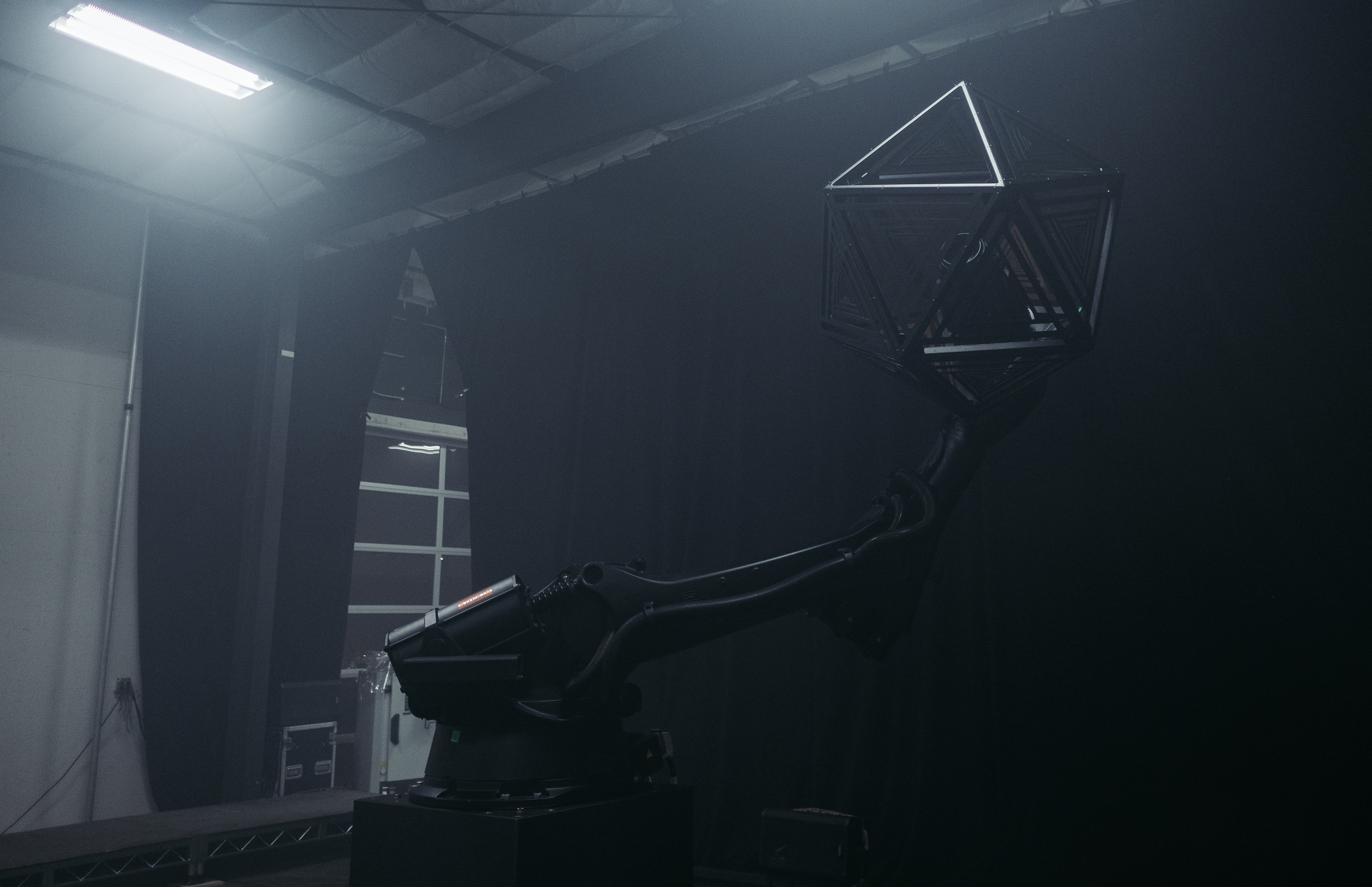
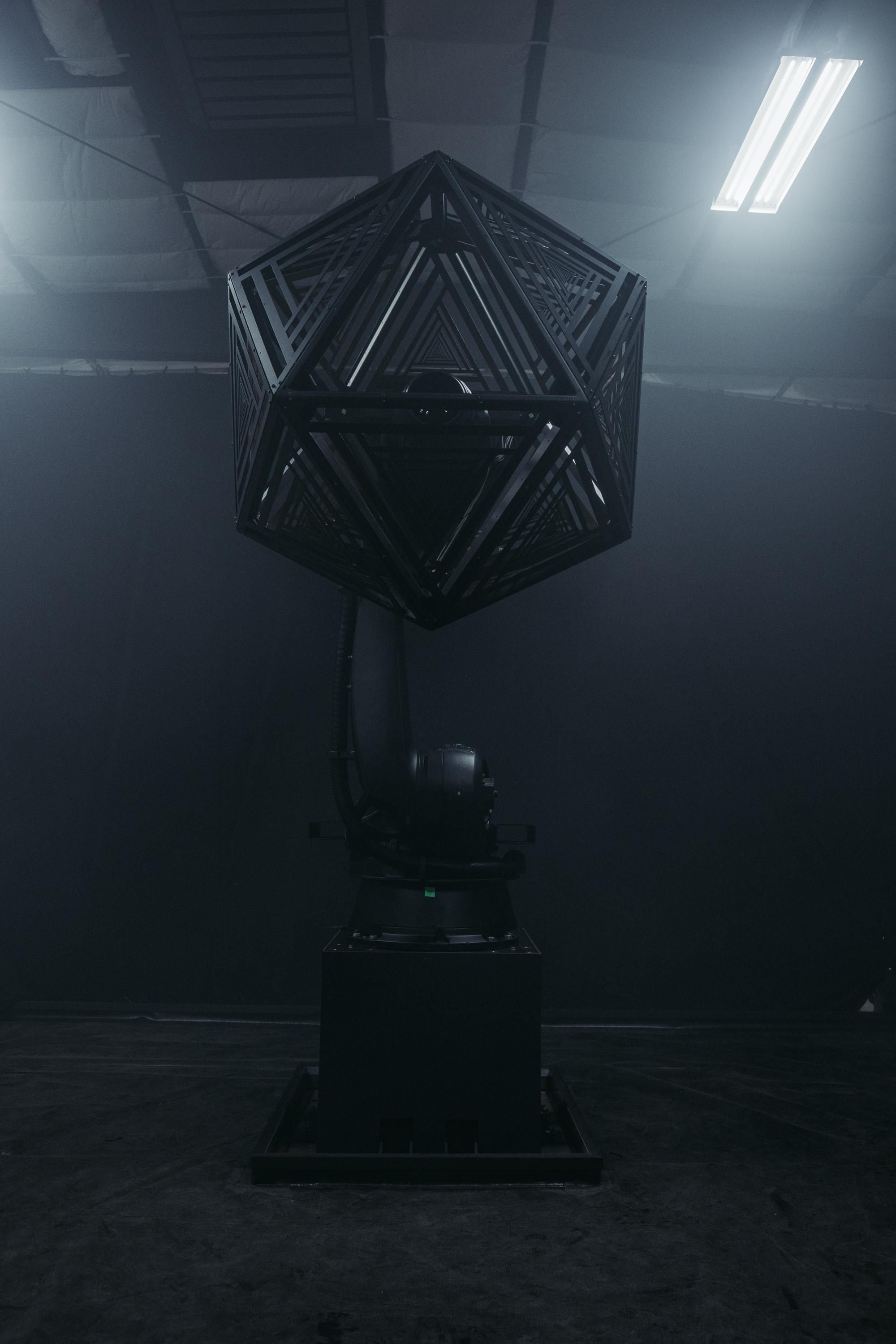

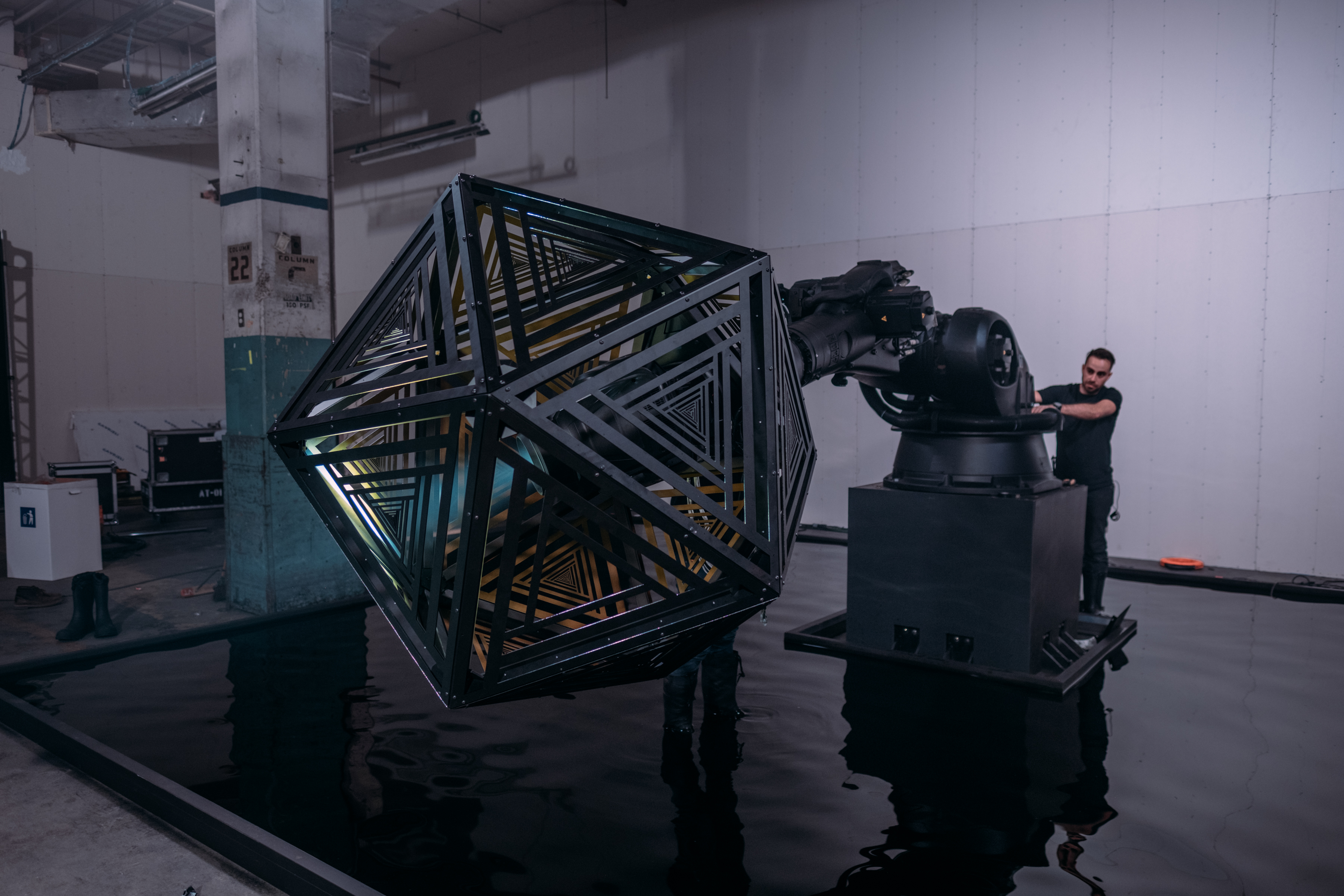
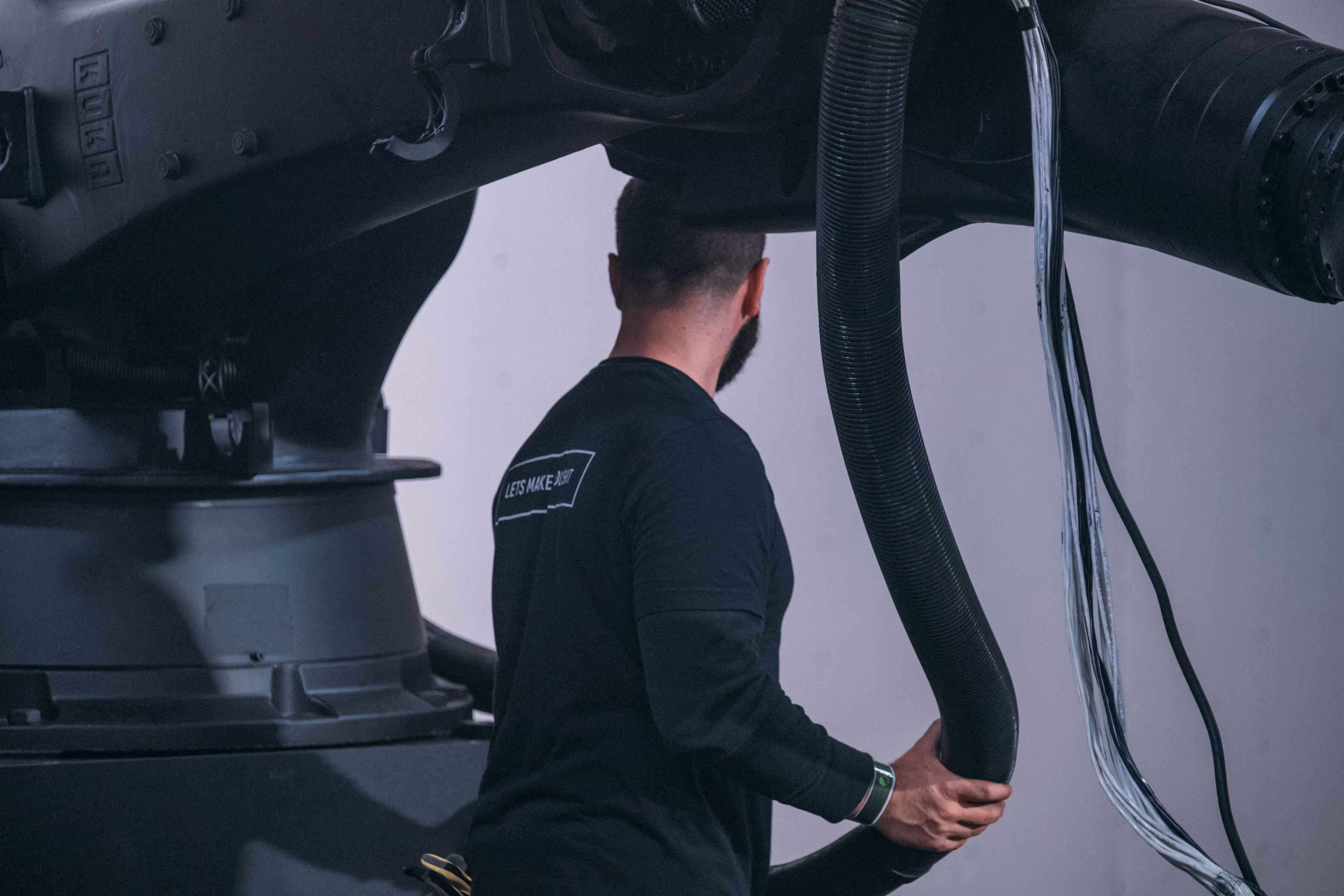
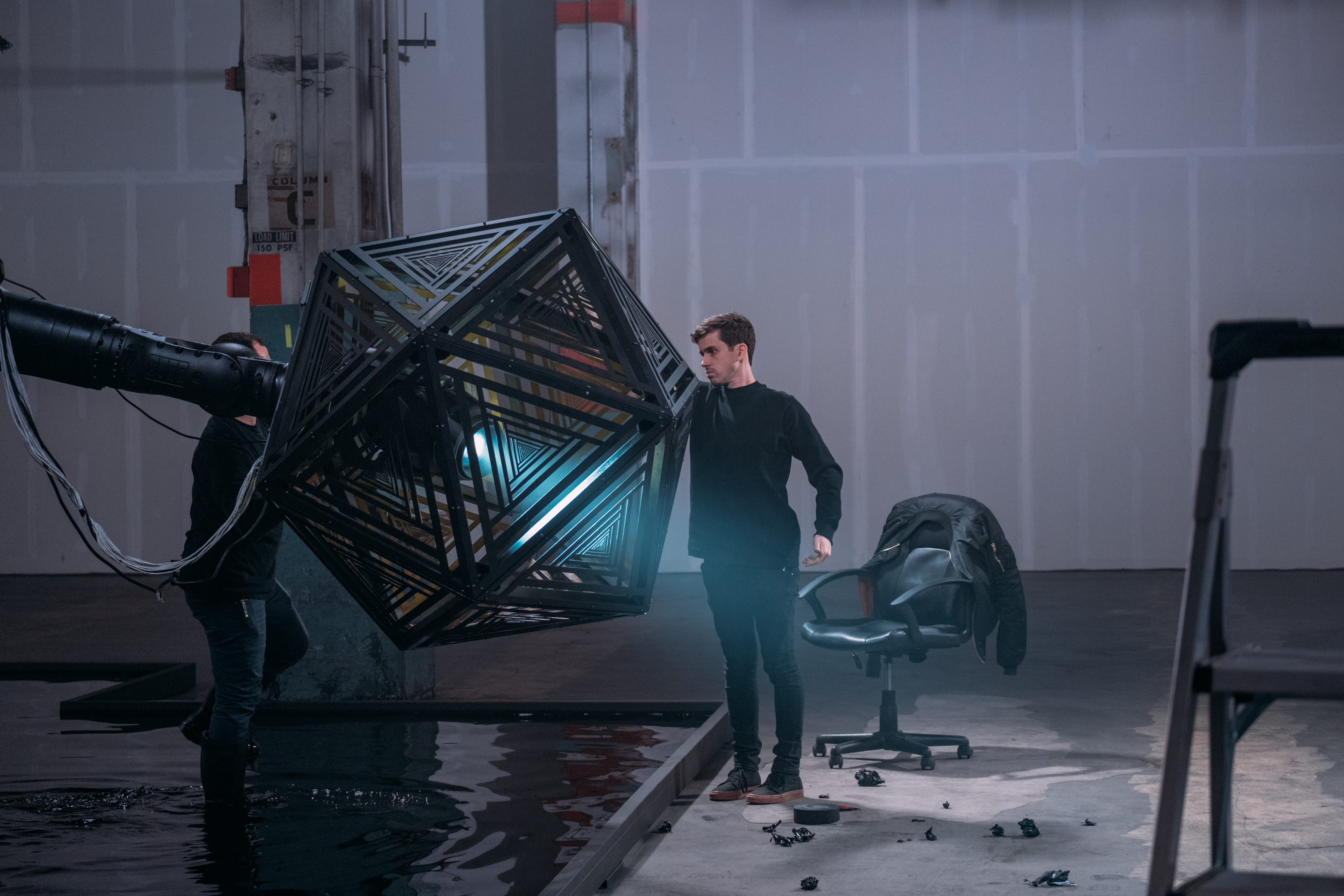


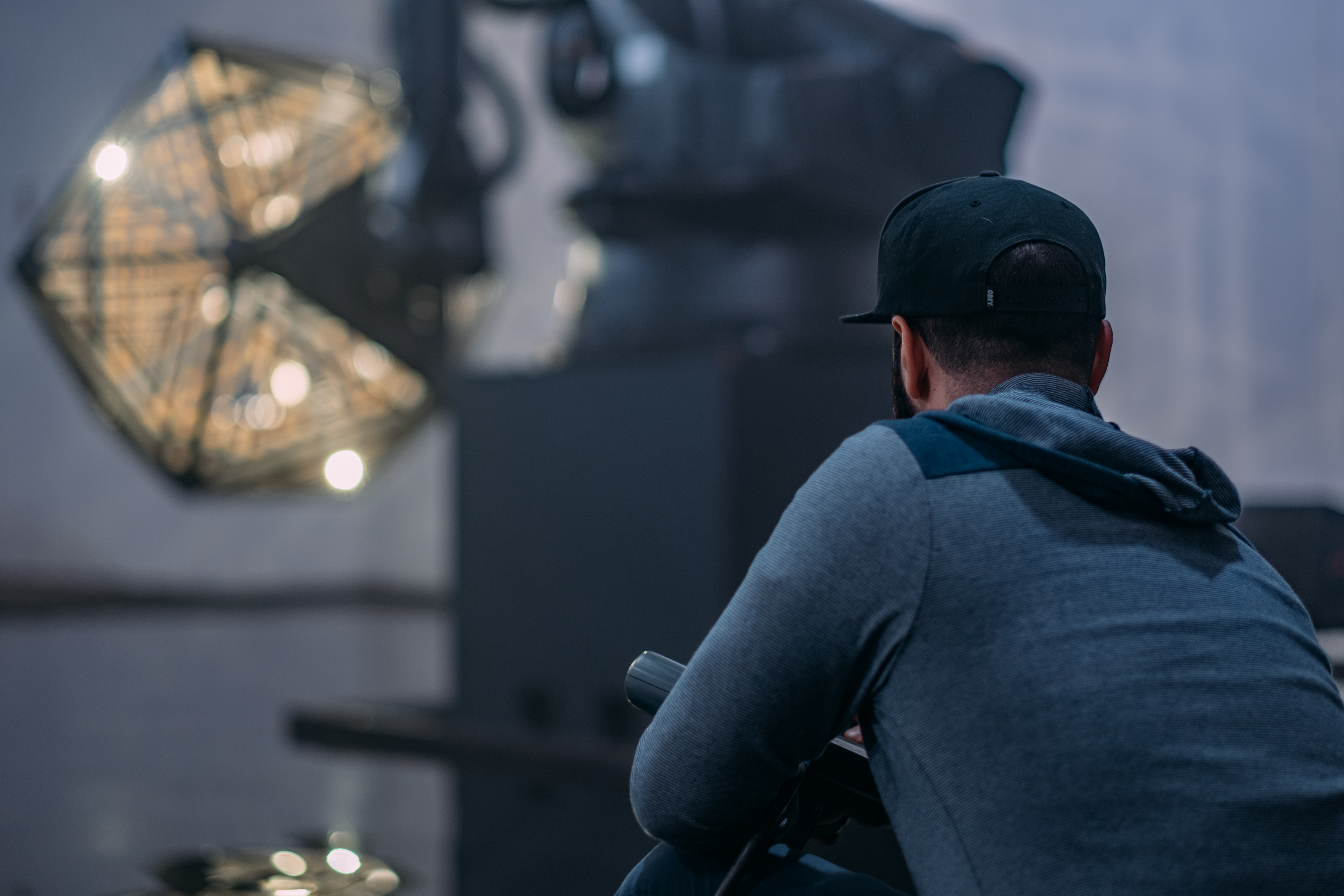
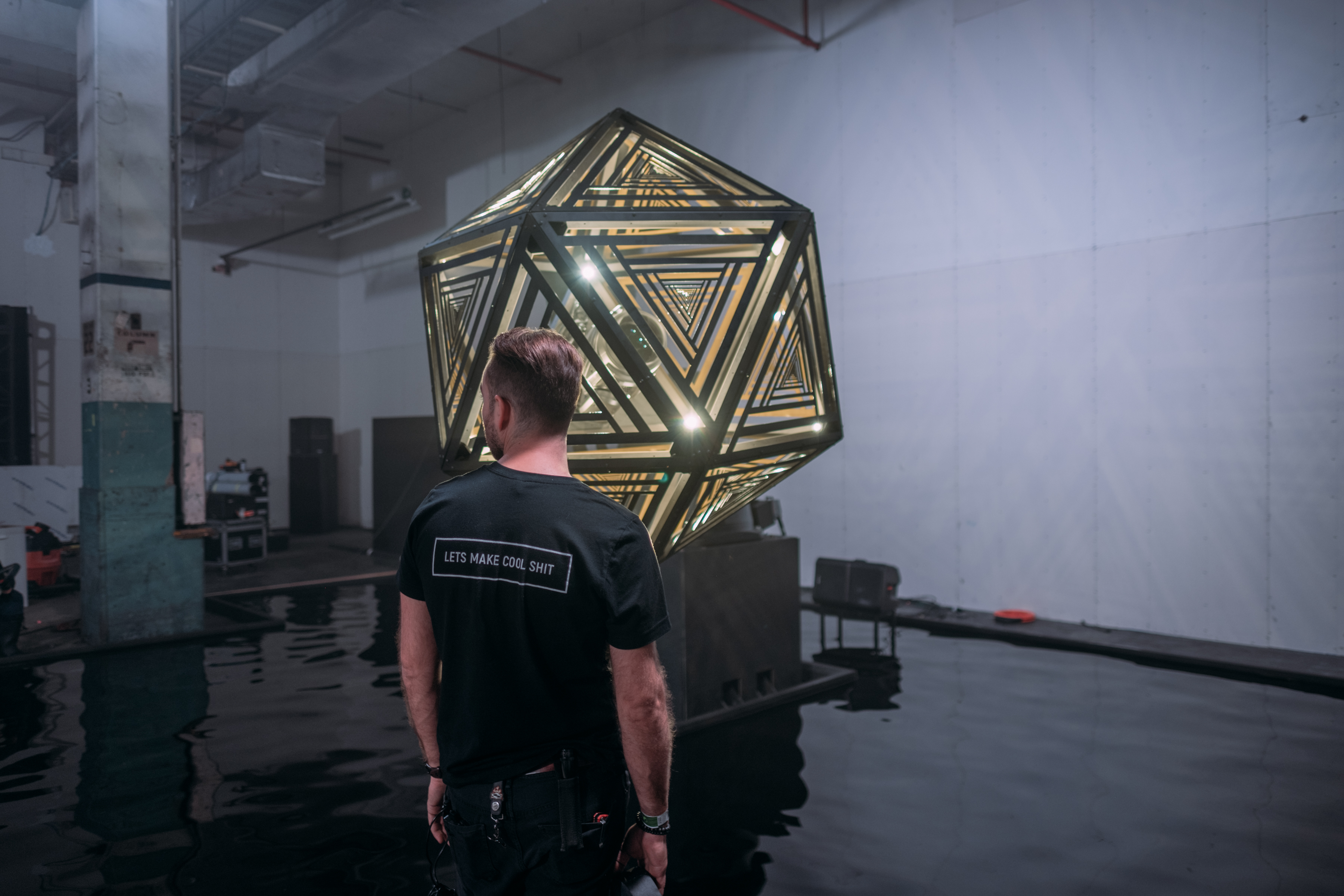
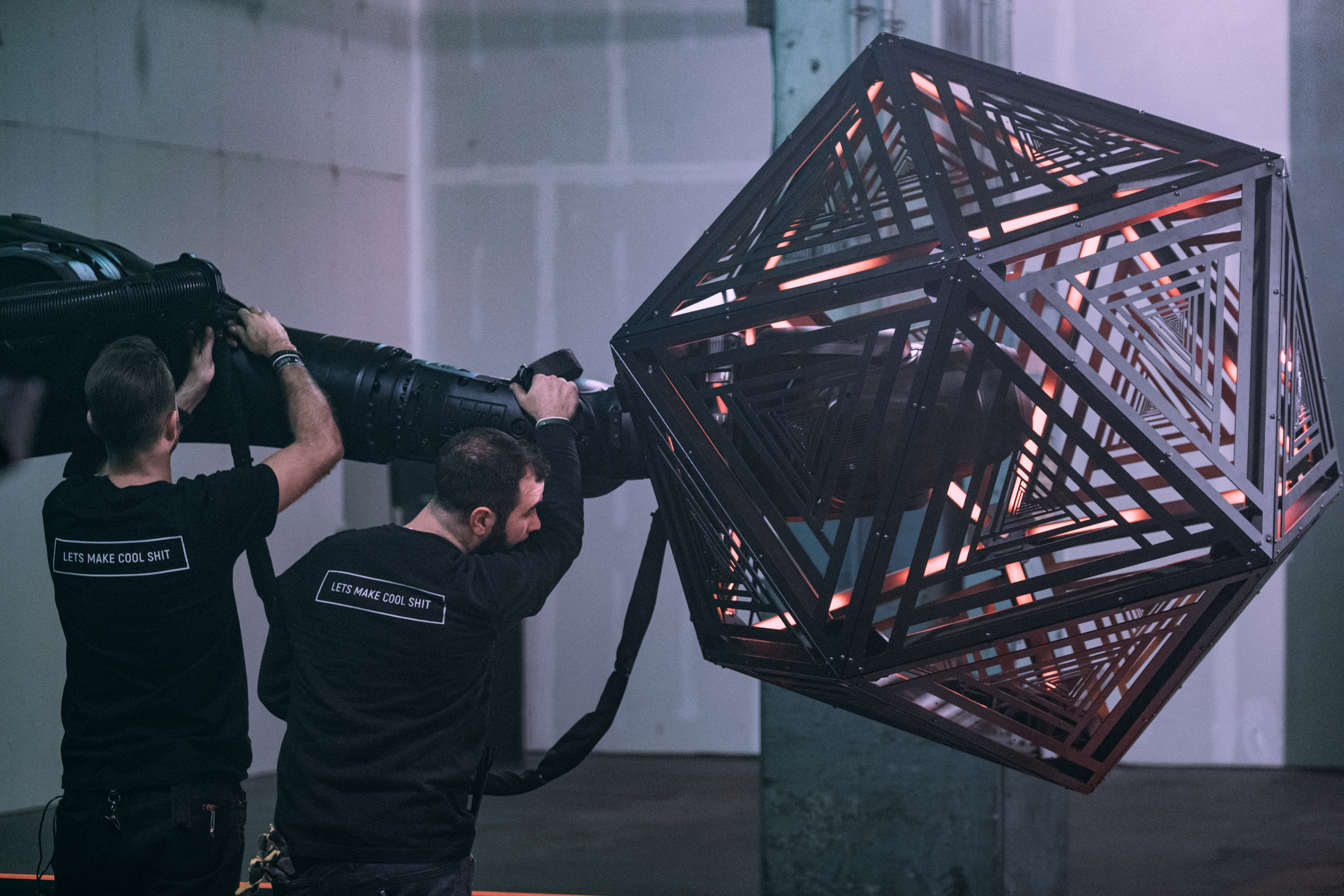

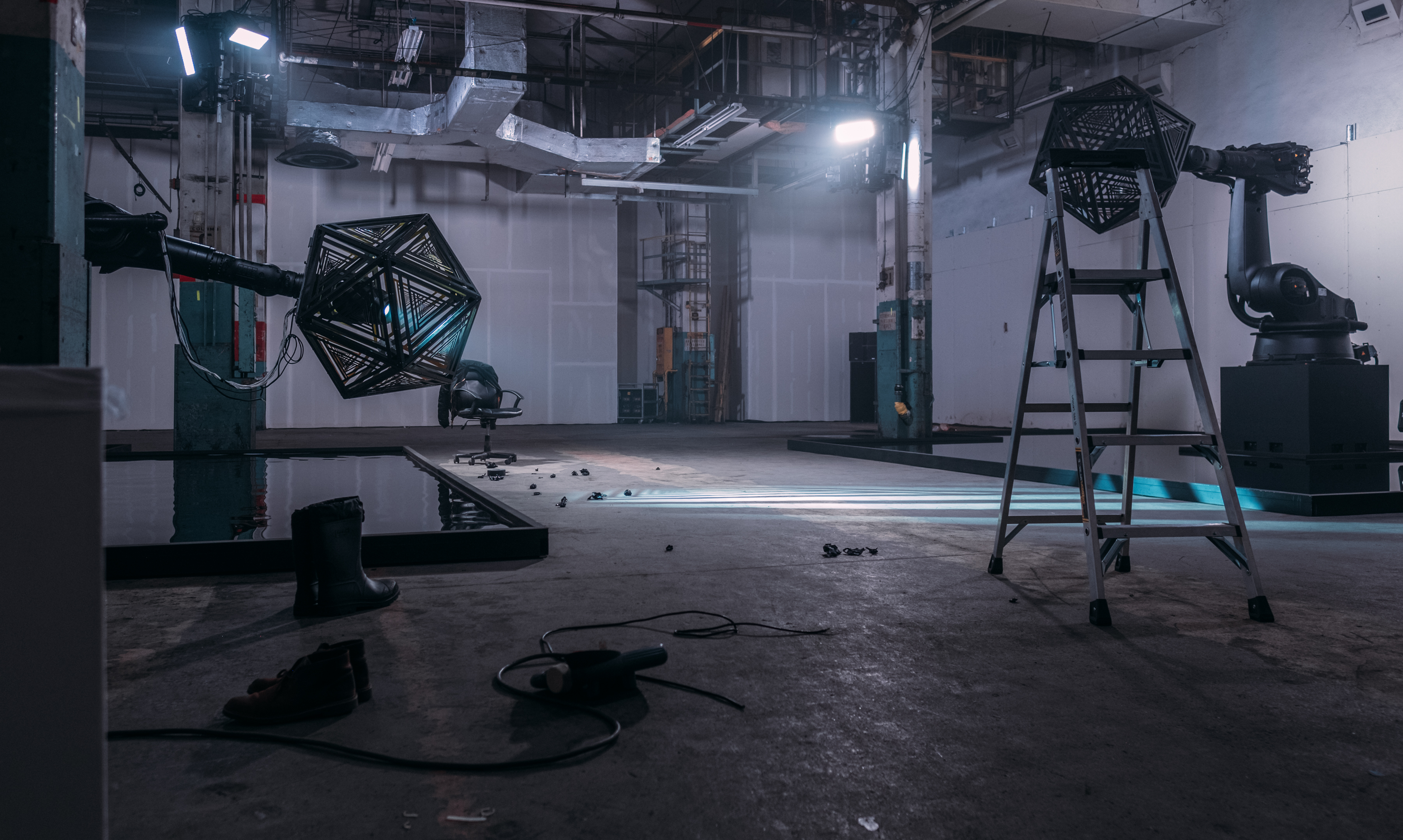
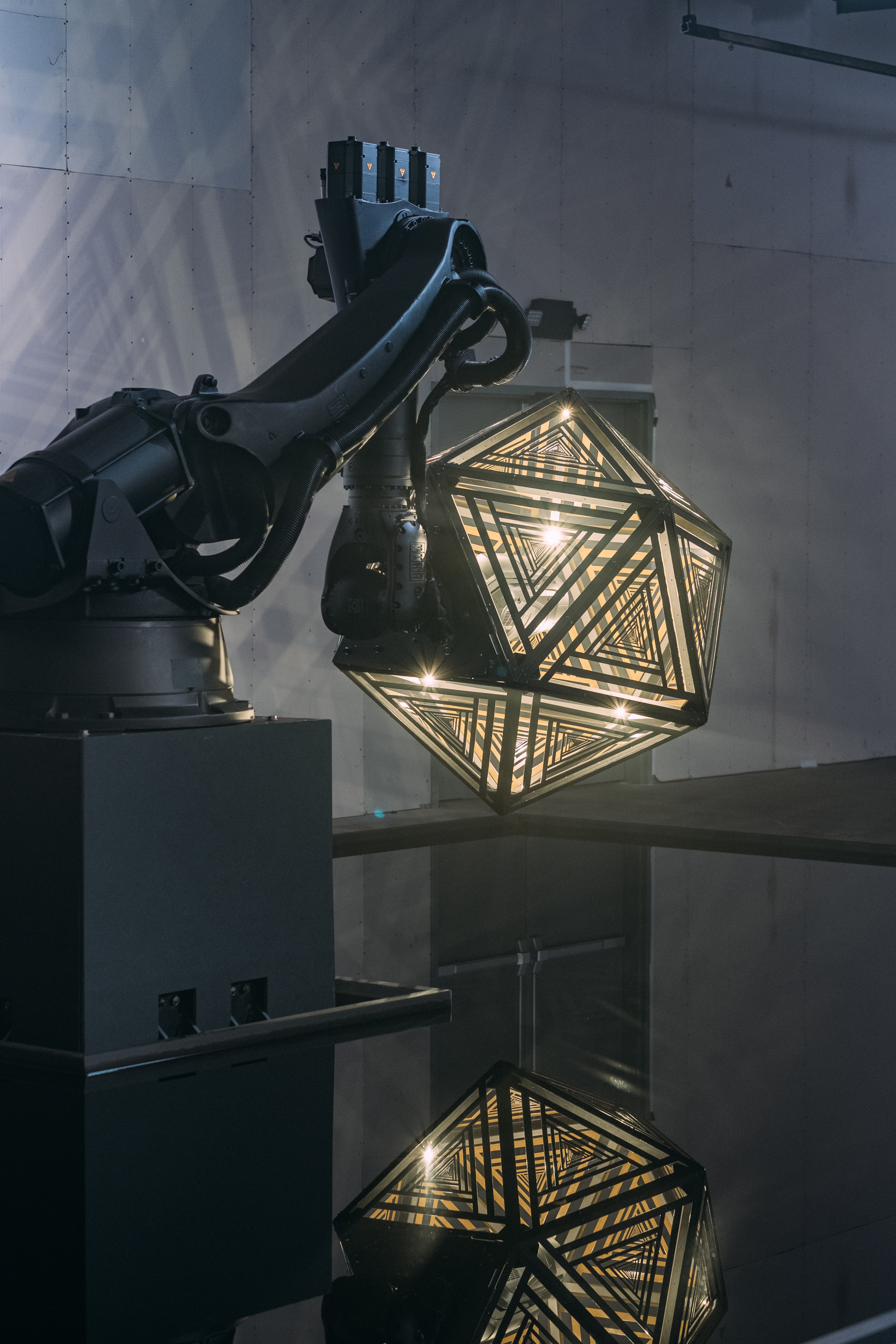
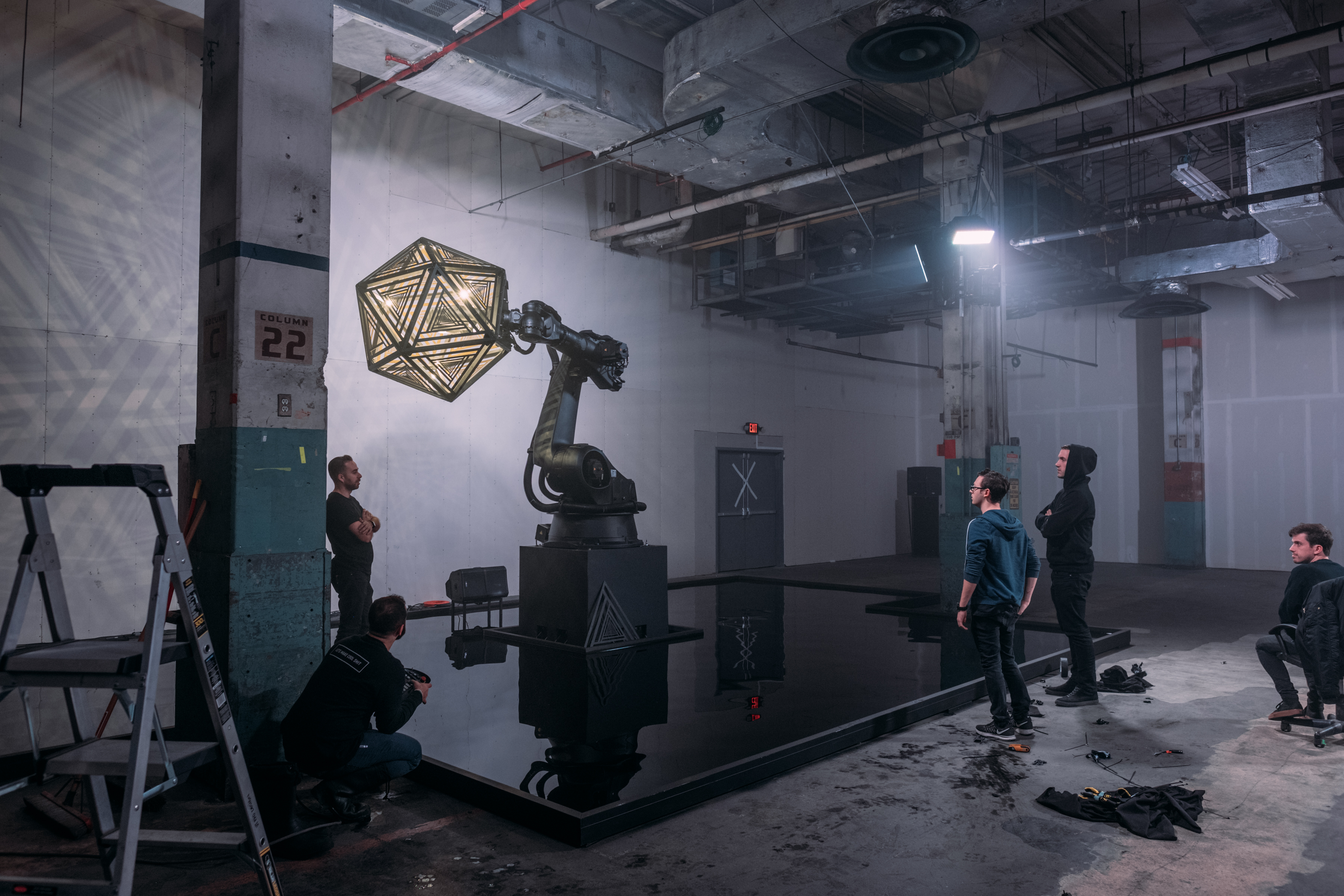

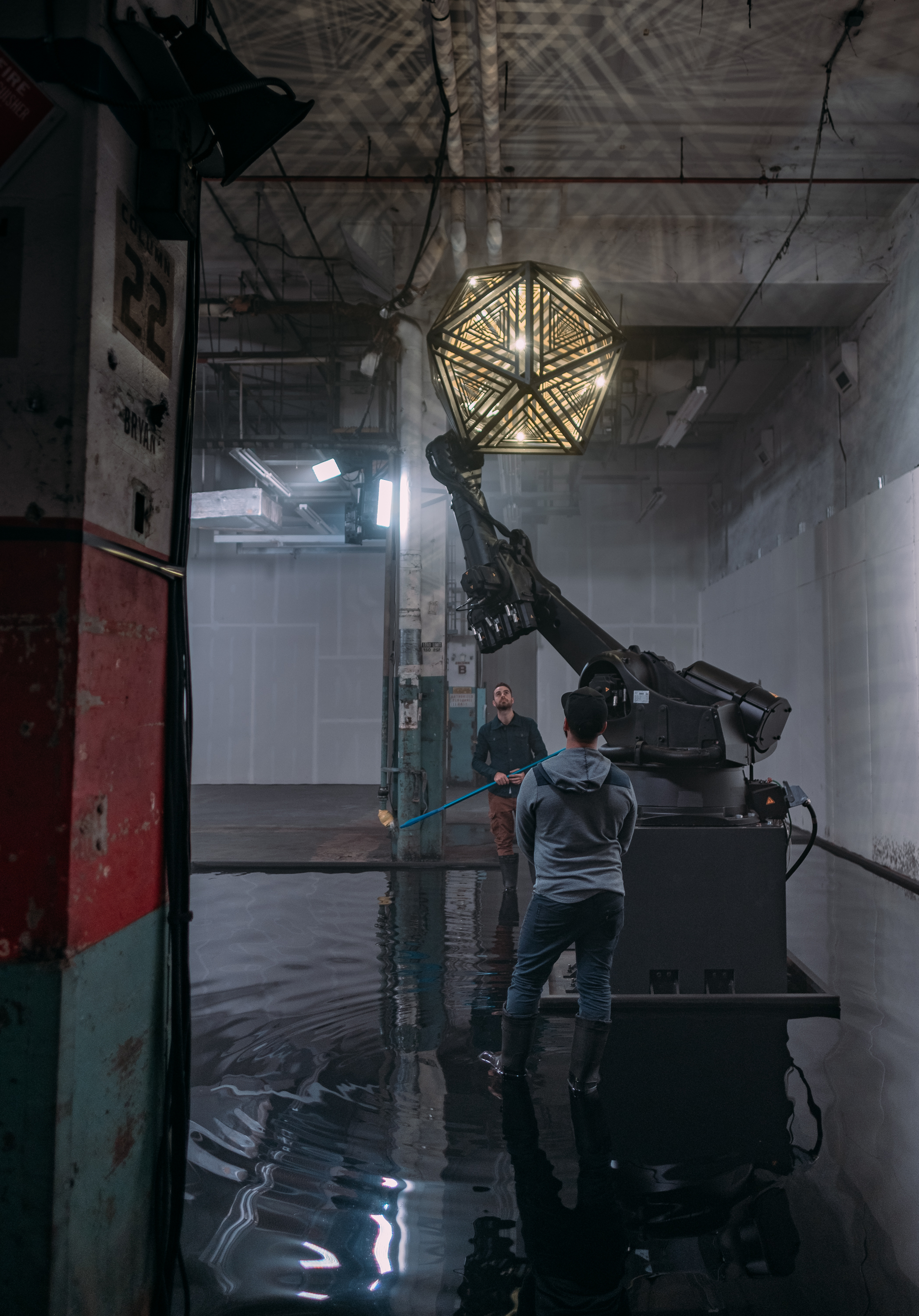
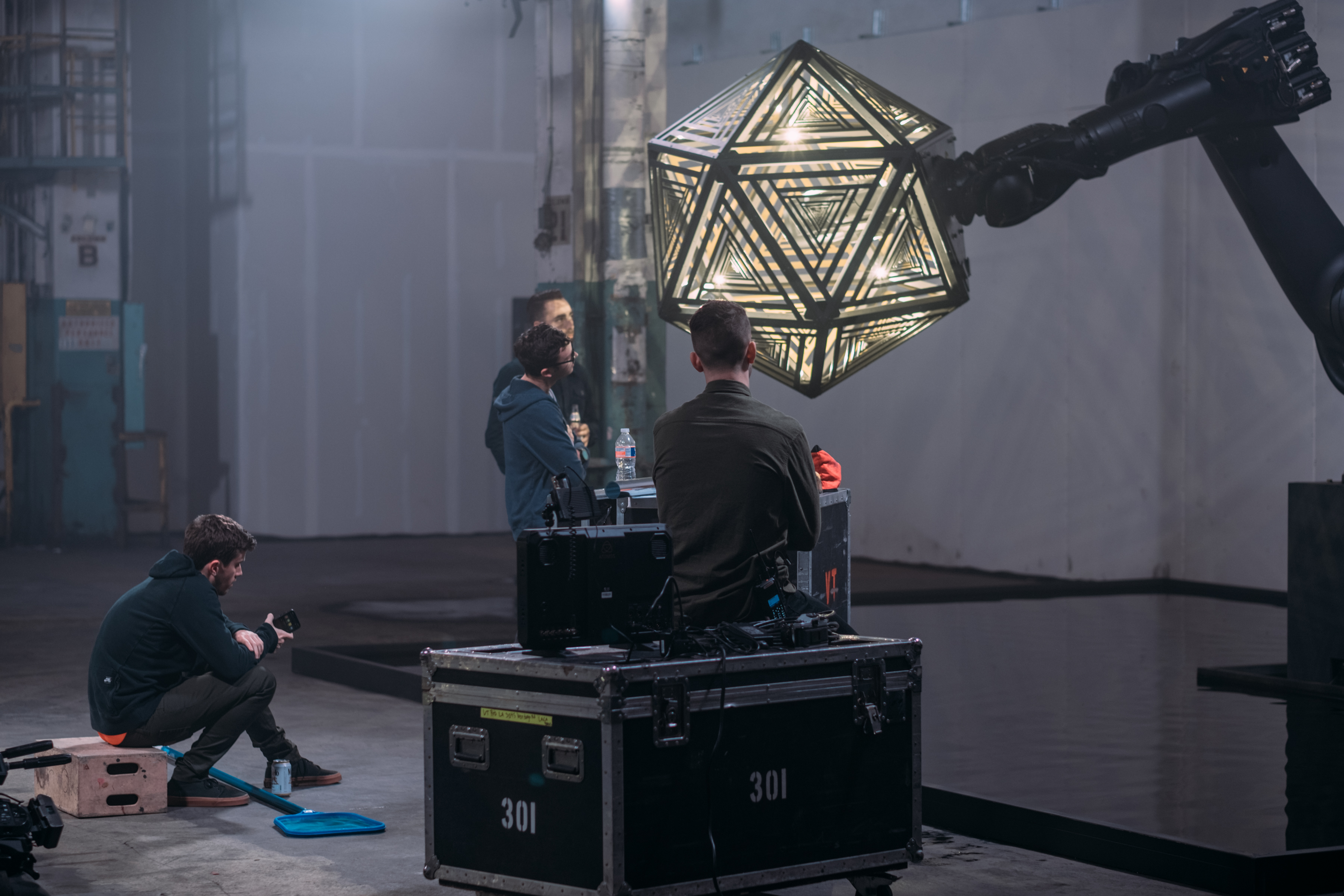
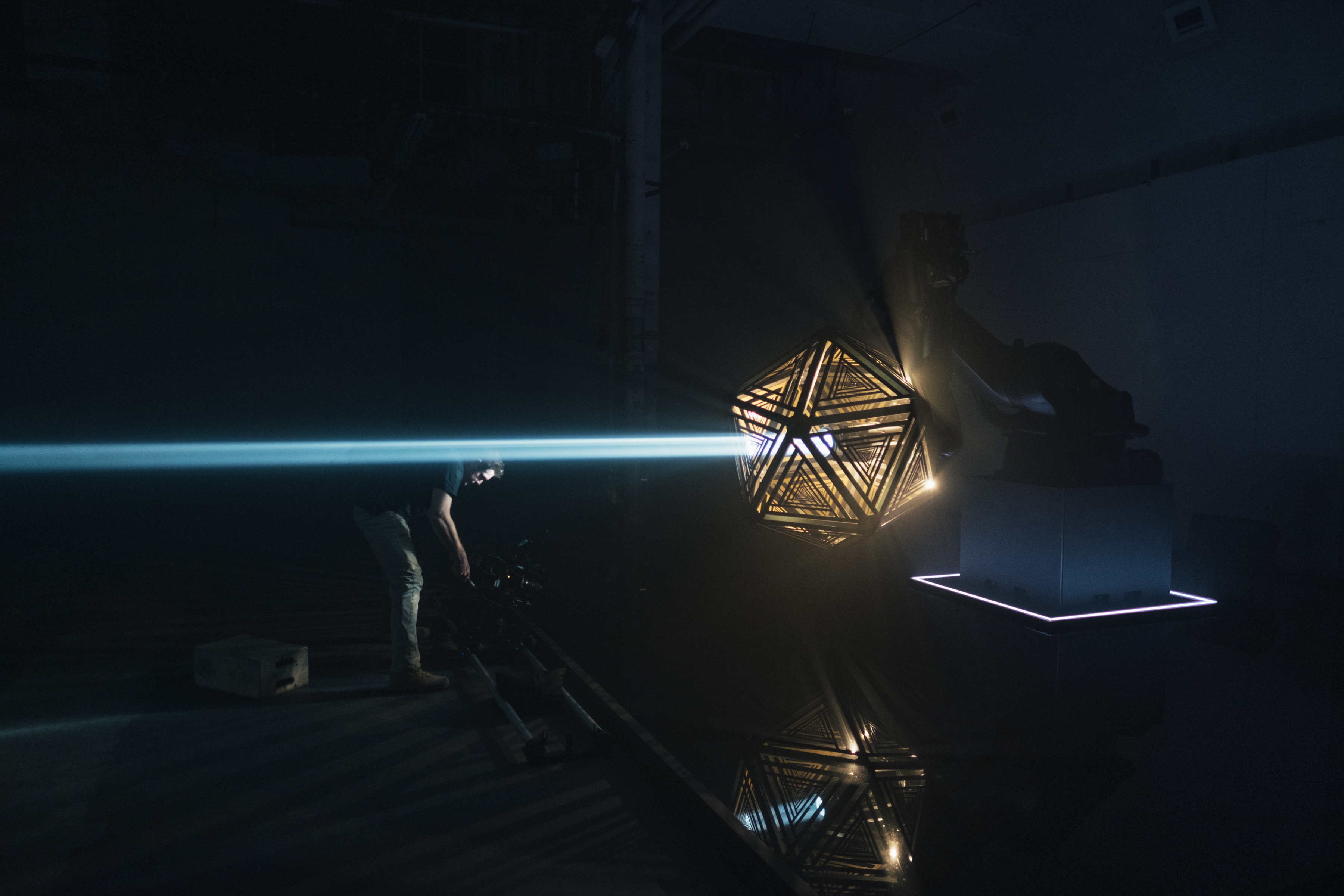
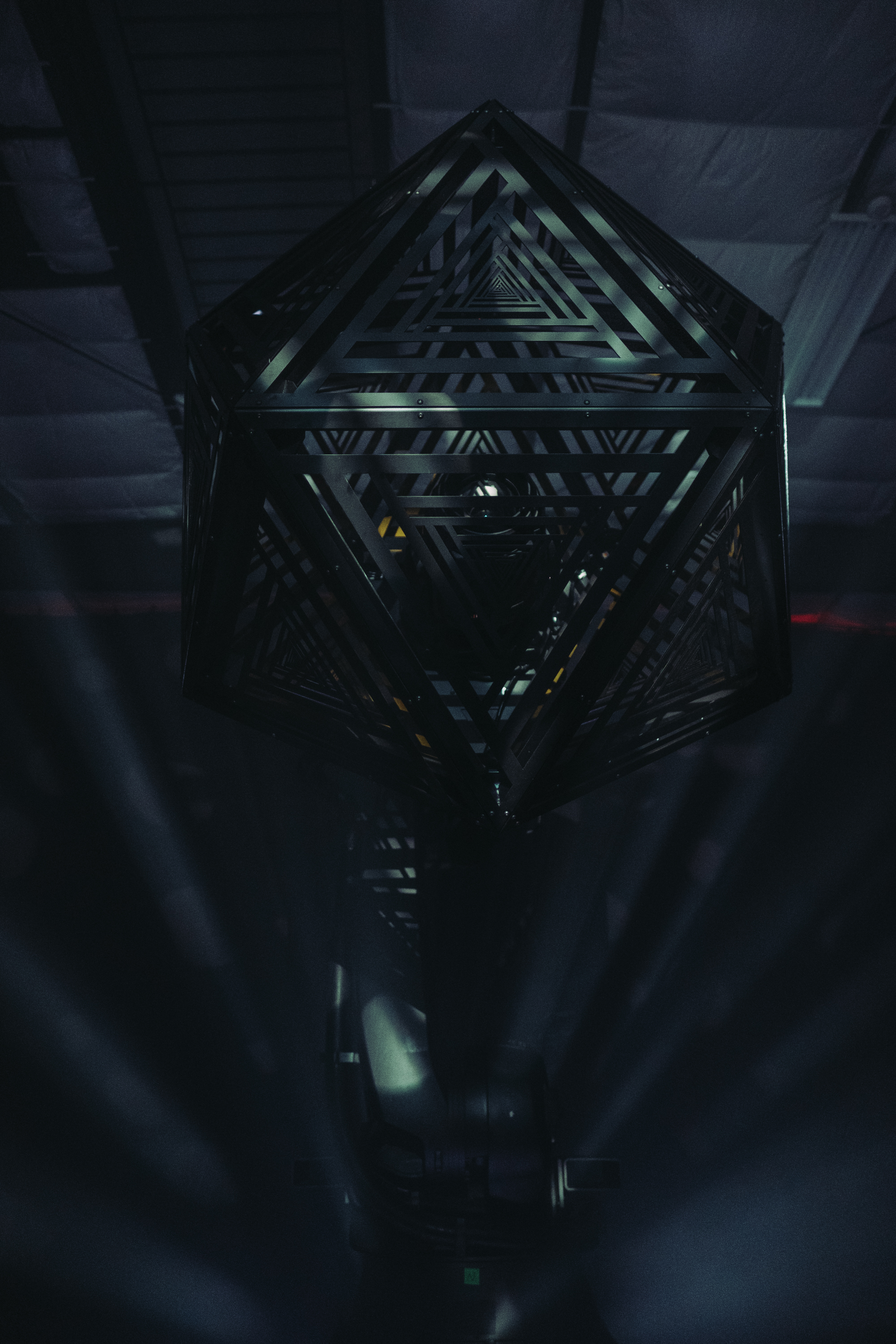

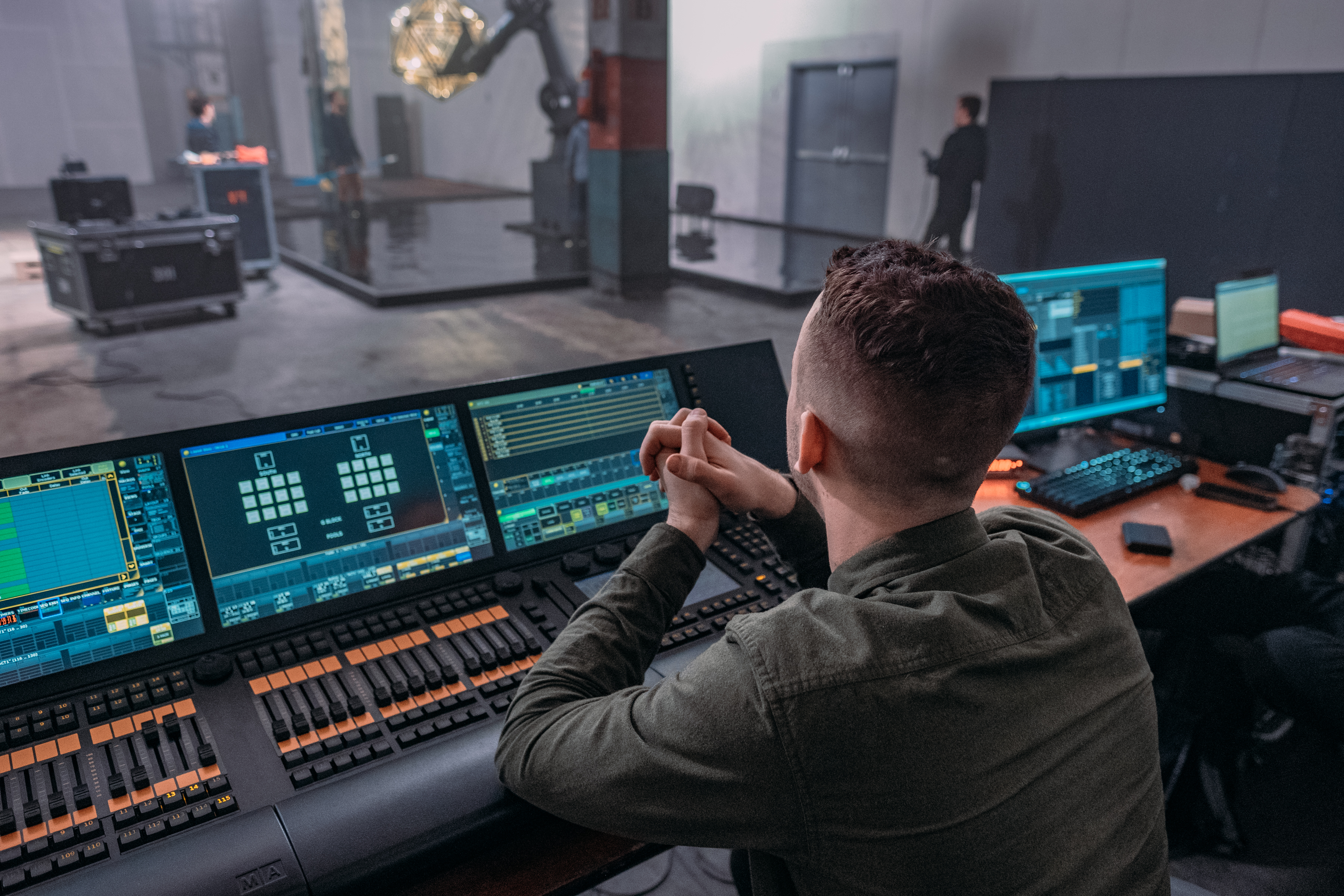
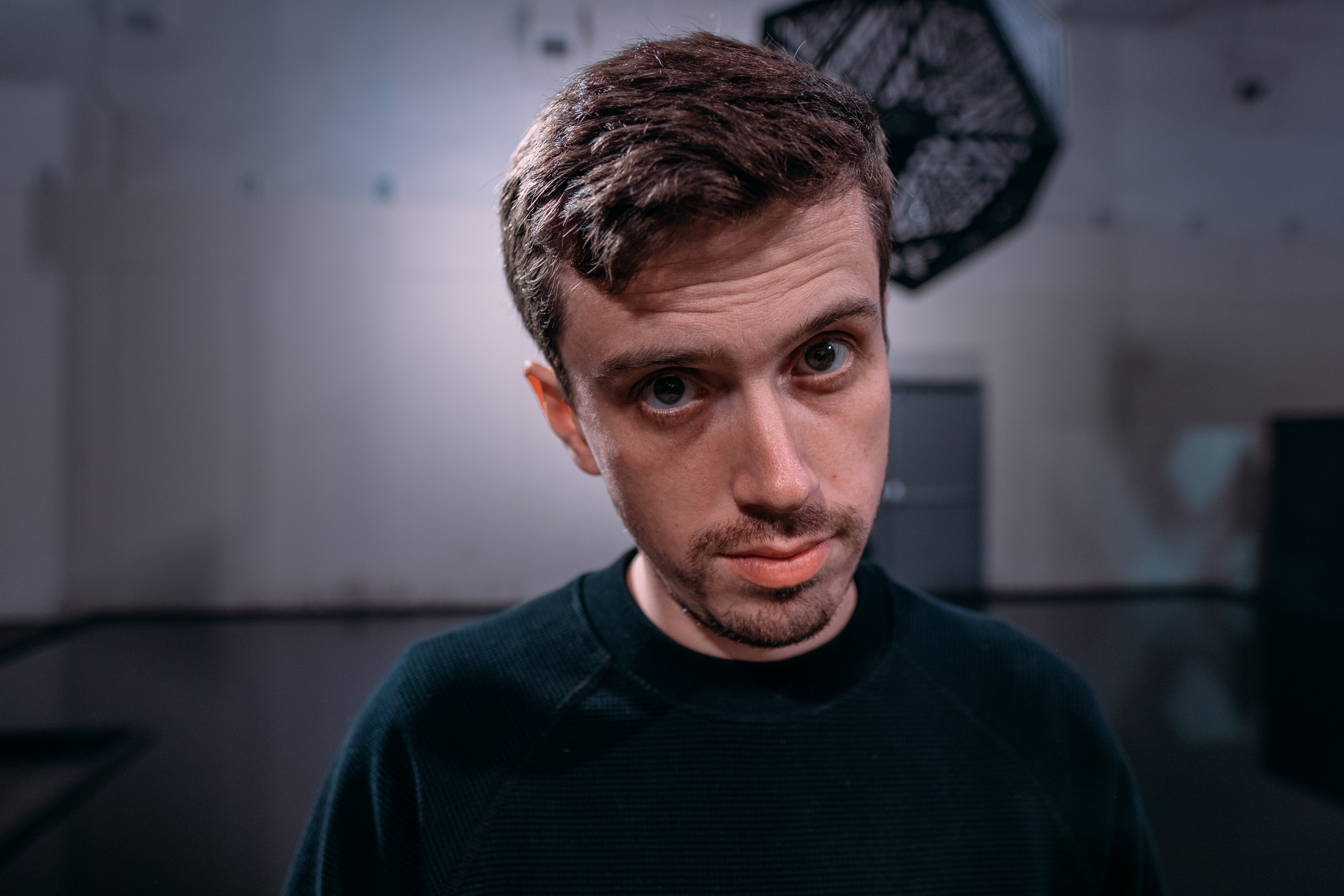
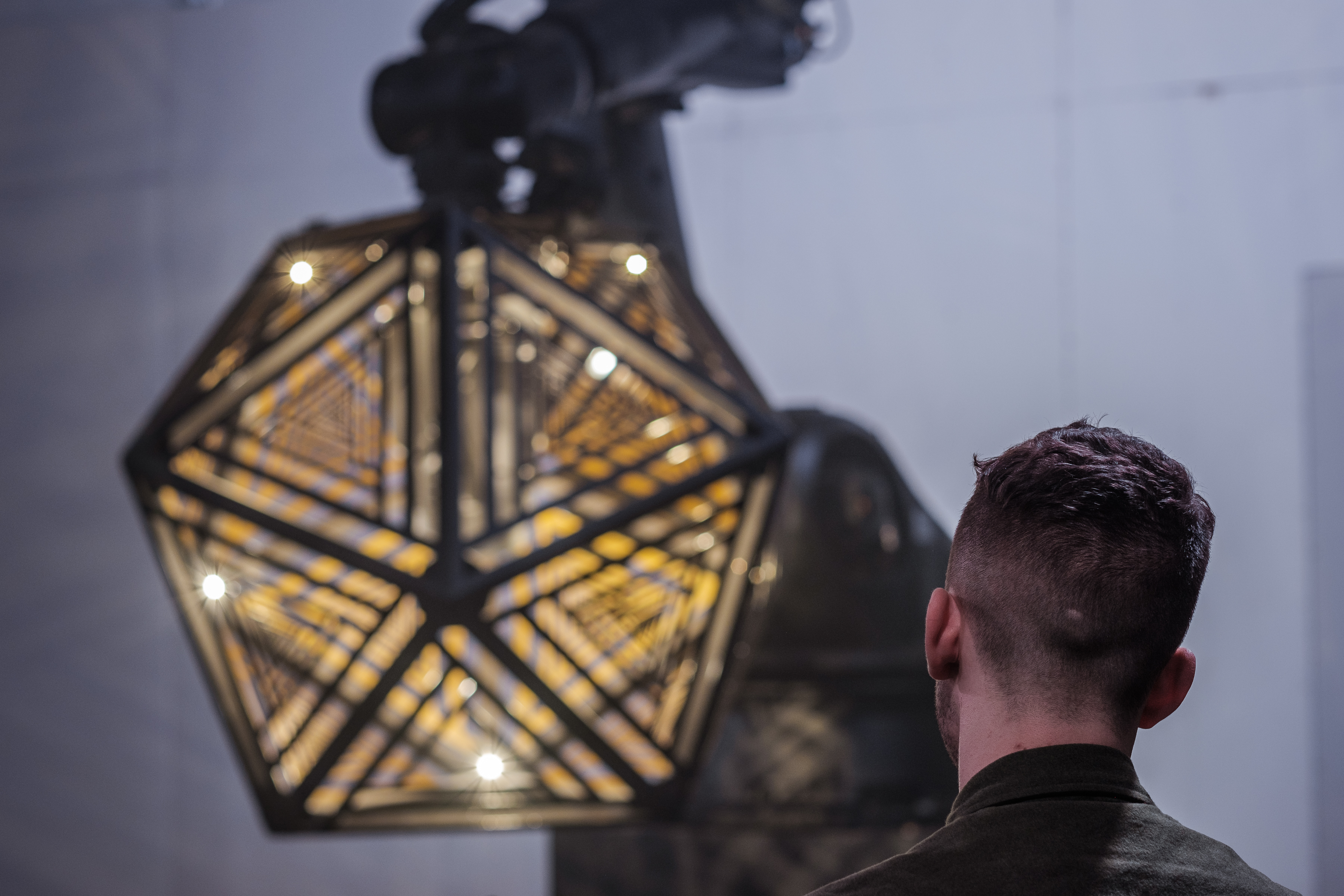
Day For Night 2017
–– 08Day for Night is a current snapshot of popular music as well as a showcase for trailblazers who continue to cross over from the fringes to become influencers. Eschewing the idea of musical genres, Day for Night focuses instead on acts that specialize in an inventive and highly visual approach to performing.
Mixed with ambitious installations, the visual artists build experiences within the blurred boundaries of performance, interaction and immersive installations both indoors and out. Large scale projections and site-specific custom-built structures bring a heightened sensorial experience to new audiences.
Housed in the historic Barbara Jordan Post Office at 401 Franklin Street, designed by the same architects as the Houston Astrodome, was the setting for 2017’s hyper-sensorial festival. The 1.5 million square foot hybrid indoor-outdoor space will house four massive stages with seamless flow between the stages and immersive art installations.
Mixed with ambitious installations, the visual artists build experiences within the blurred boundaries of performance, interaction and immersive installations both indoors and out. Large scale projections and site-specific custom-built structures bring a heightened sensorial experience to new audiences.
Housed in the historic Barbara Jordan Post Office at 401 Franklin Street, designed by the same architects as the Houston Astrodome, was the setting for 2017’s hyper-sensorial festival. The 1.5 million square foot hybrid indoor-outdoor space will house four massive stages with seamless flow between the stages and immersive art installations.

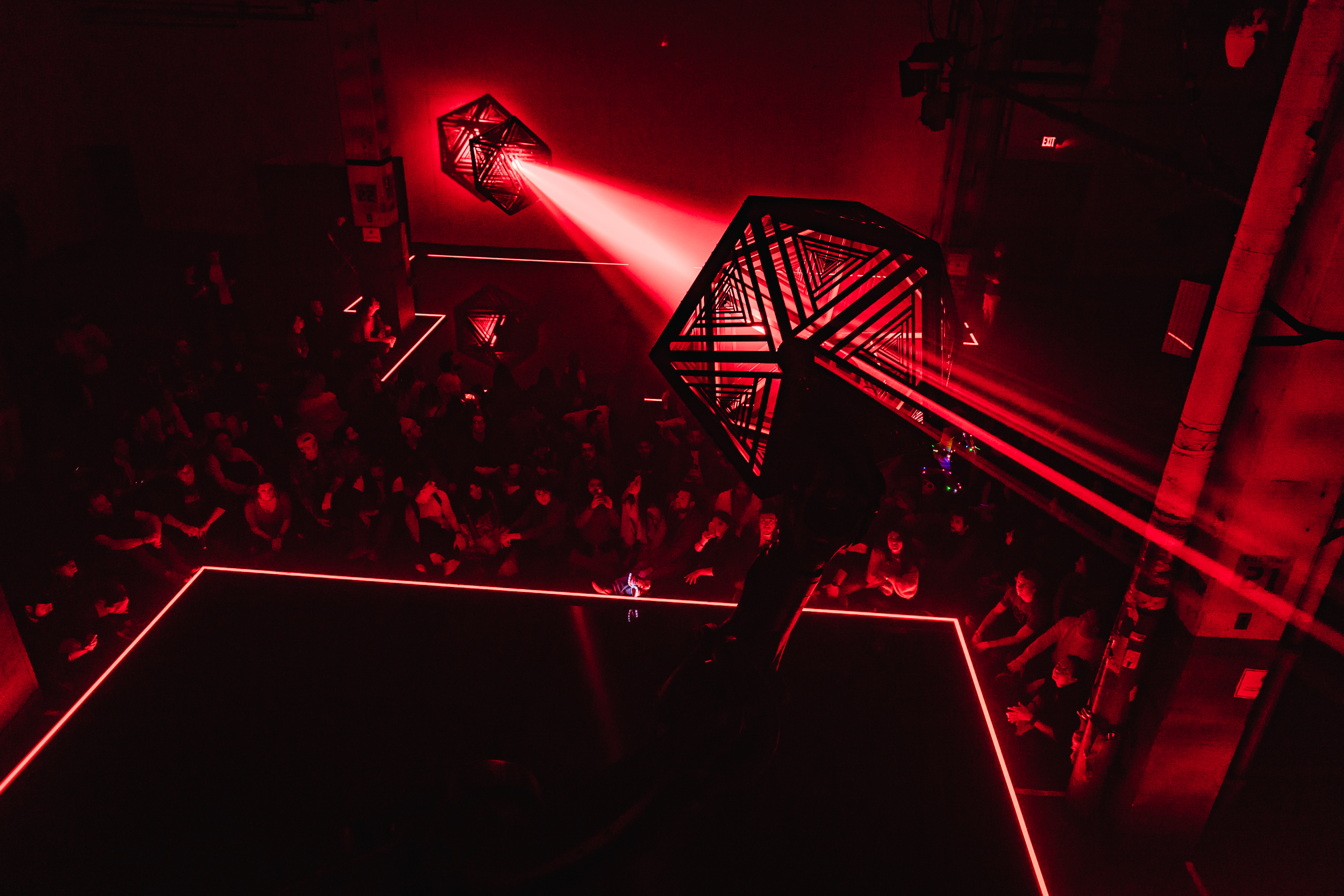
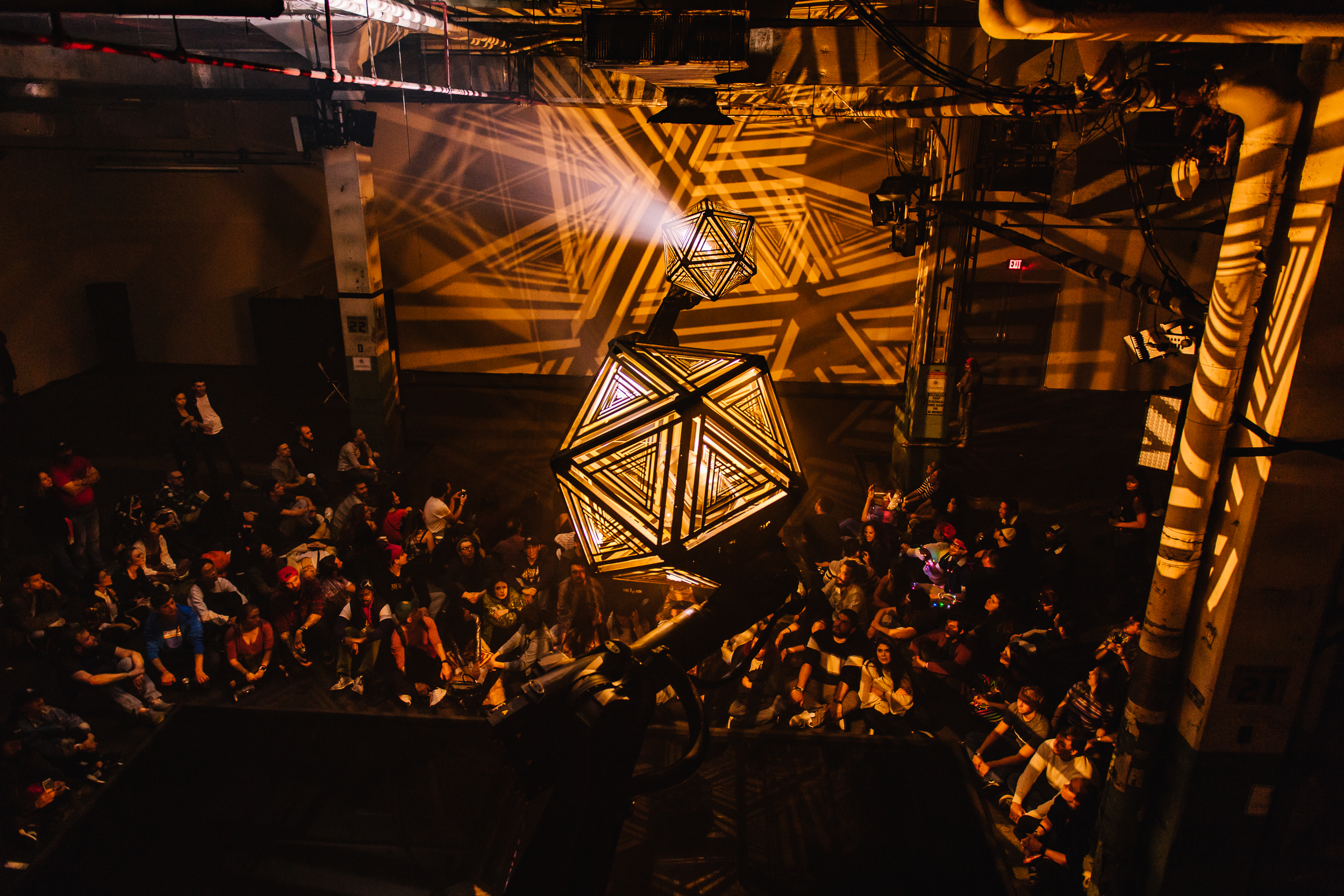

Telestron Credit List
Production Design: VT Pro Design
Creative Direction: Michael Fullman, Bradley G Munkowitz
Concept Writer: Stephen Marshall
Touch Designer Programming: Matt Wachter
Lighting Design: Gabe Fraboni
Technical Design: Harry Souders, Jack Gilmore
Production Management: Hayk Khanjian, Nico Yernazian
Robot Animation & Previs: Jordan Ariel, Akiko Yamashita
Design Assistant: David Gao
Cinematographers: Andrew Curtis, Aaron Marcellino
Editor: Jordan Ariel
Colorist: Billy Hobson
Composer: SoundsRED
Production Design: VT Pro Design
Creative Direction: Michael Fullman, Bradley G Munkowitz
Concept Writer: Stephen Marshall
Touch Designer Programming: Matt Wachter
Lighting Design: Gabe Fraboni
Technical Design: Harry Souders, Jack Gilmore
Production Management: Hayk Khanjian, Nico Yernazian
Robot Animation & Previs: Jordan Ariel, Akiko Yamashita
Design Assistant: David Gao
Cinematographers: Andrew Curtis, Aaron Marcellino
Editor: Jordan Ariel
Colorist: Billy Hobson
Composer: SoundsRED
Press Links
DesignBoom –– TELESTRON, towering robots perform ritual from ancient greece
Billboard.com –– The Robotic Ballet of VT Pro's Telestron was most mind-blowing
The FWA –– FWA Of The Day 13th September 2018
Everfest –– 20 Dazzlingly Trippy Images from Day for Night 2017
FestPop –– Day For Night: The Most Visionary Event On The Planet
Broadway World –– Day For Night: The Most Visionary Event on the Planet
Houston Press –– Playing With Light, the Visual Art of Day For Night Wins Again
DesignBoom –– TELESTRON, towering robots perform ritual from ancient greece
Billboard.com –– The Robotic Ballet of VT Pro's Telestron was most mind-blowing
The FWA –– FWA Of The Day 13th September 2018
Everfest –– 20 Dazzlingly Trippy Images from Day for Night 2017
FestPop –– Day For Night: The Most Visionary Event On The Planet
Broadway World –– Day For Night: The Most Visionary Event on the Planet
Houston Press –– Playing With Light, the Visual Art of Day For Night Wins Again